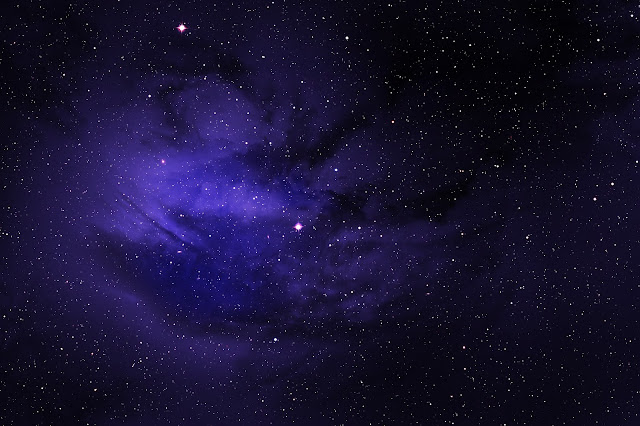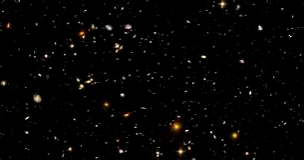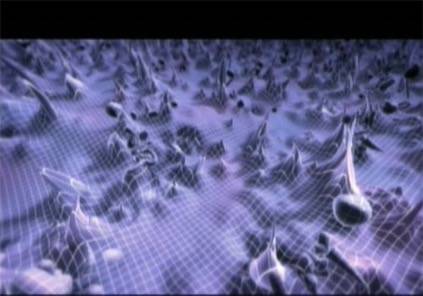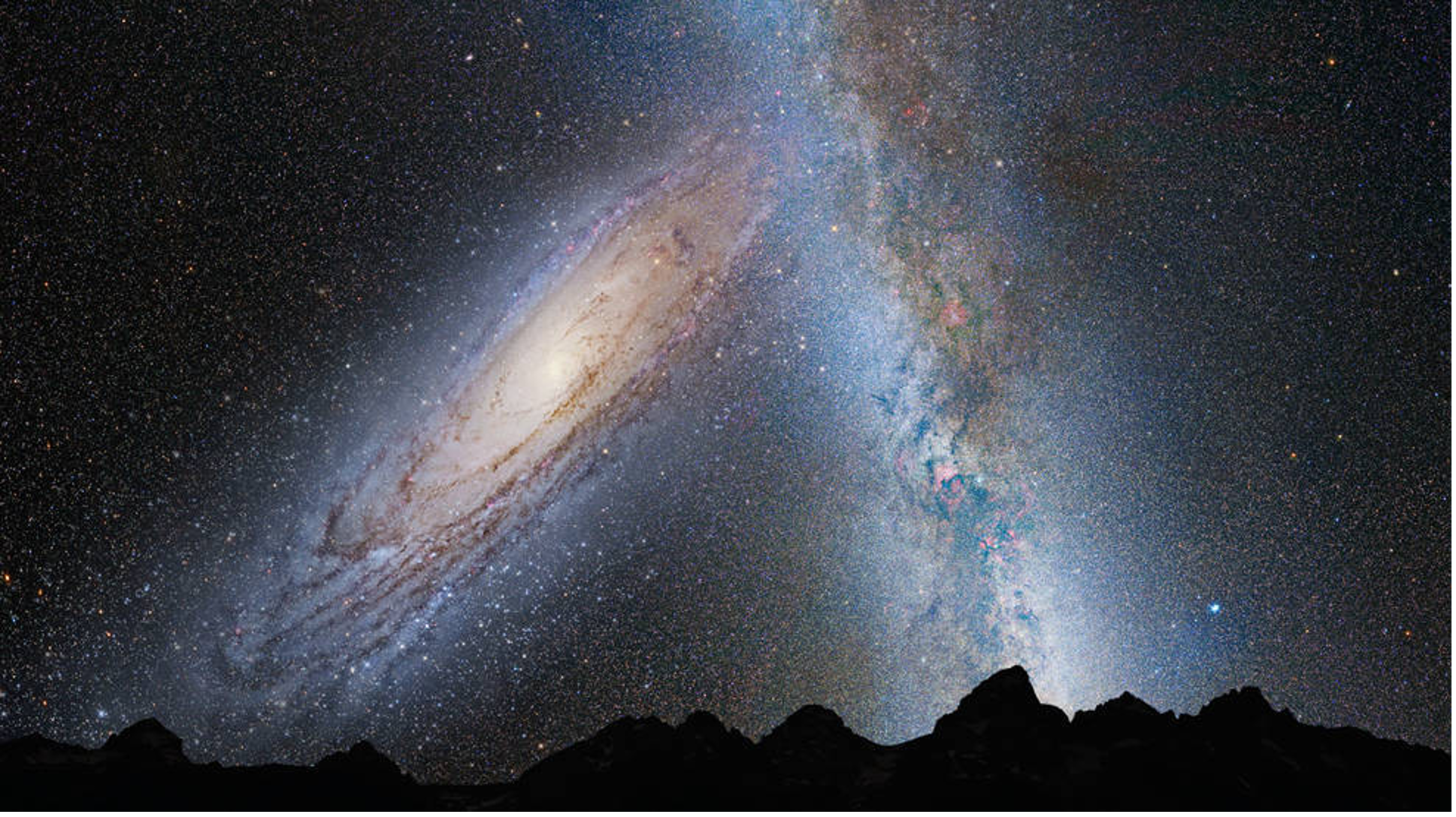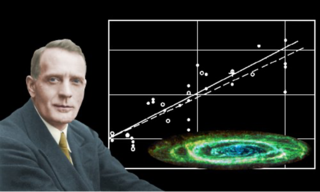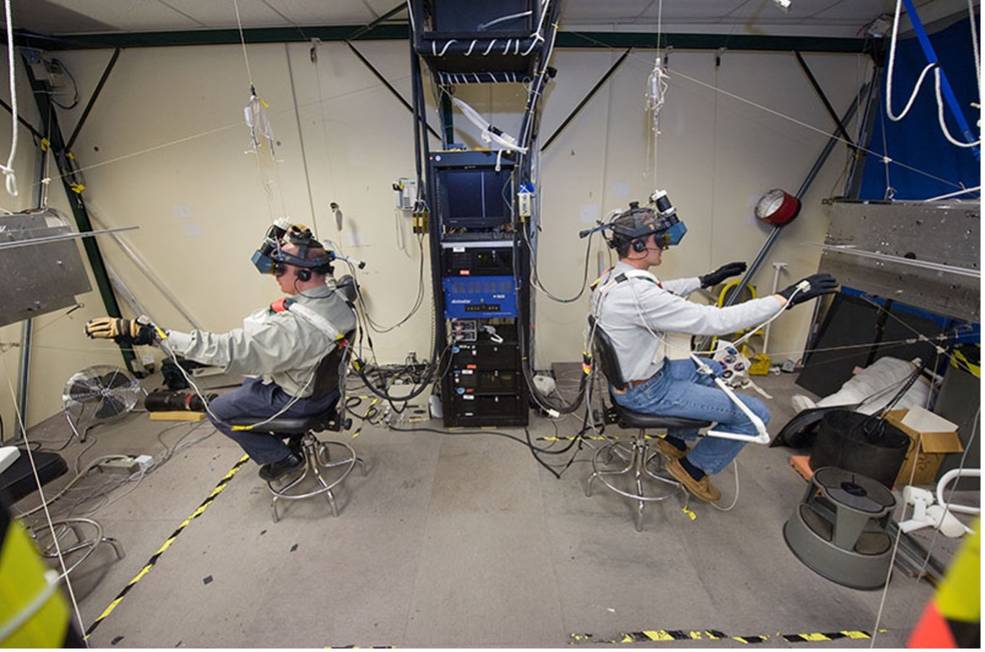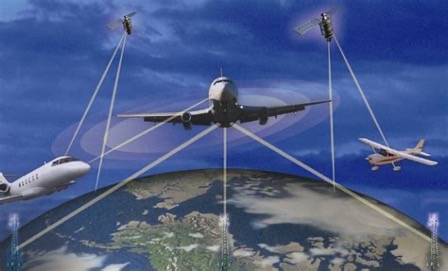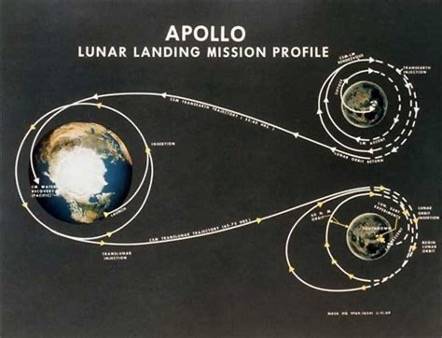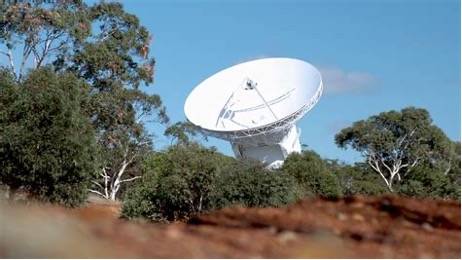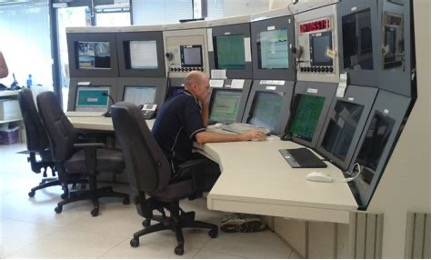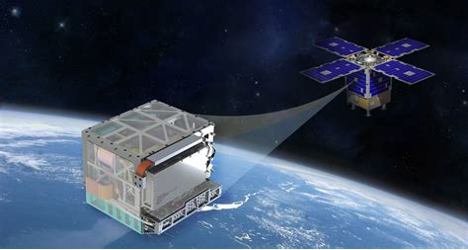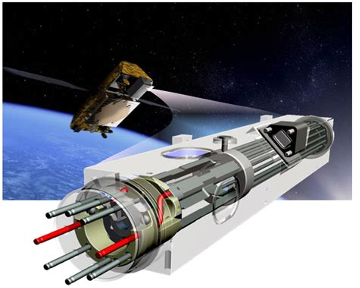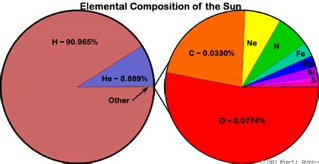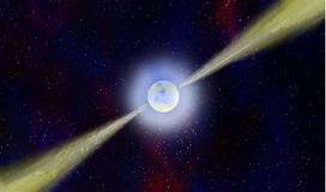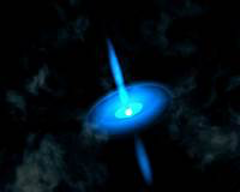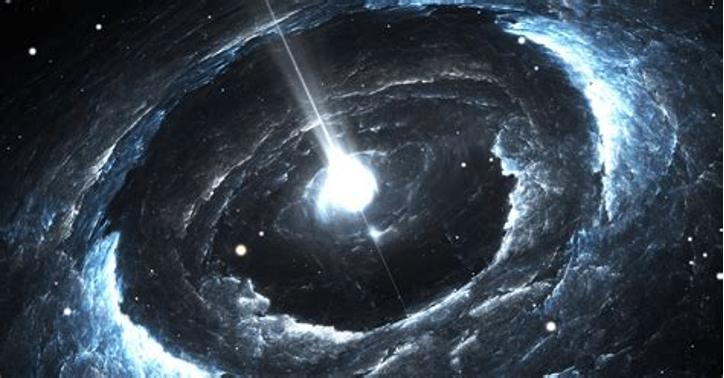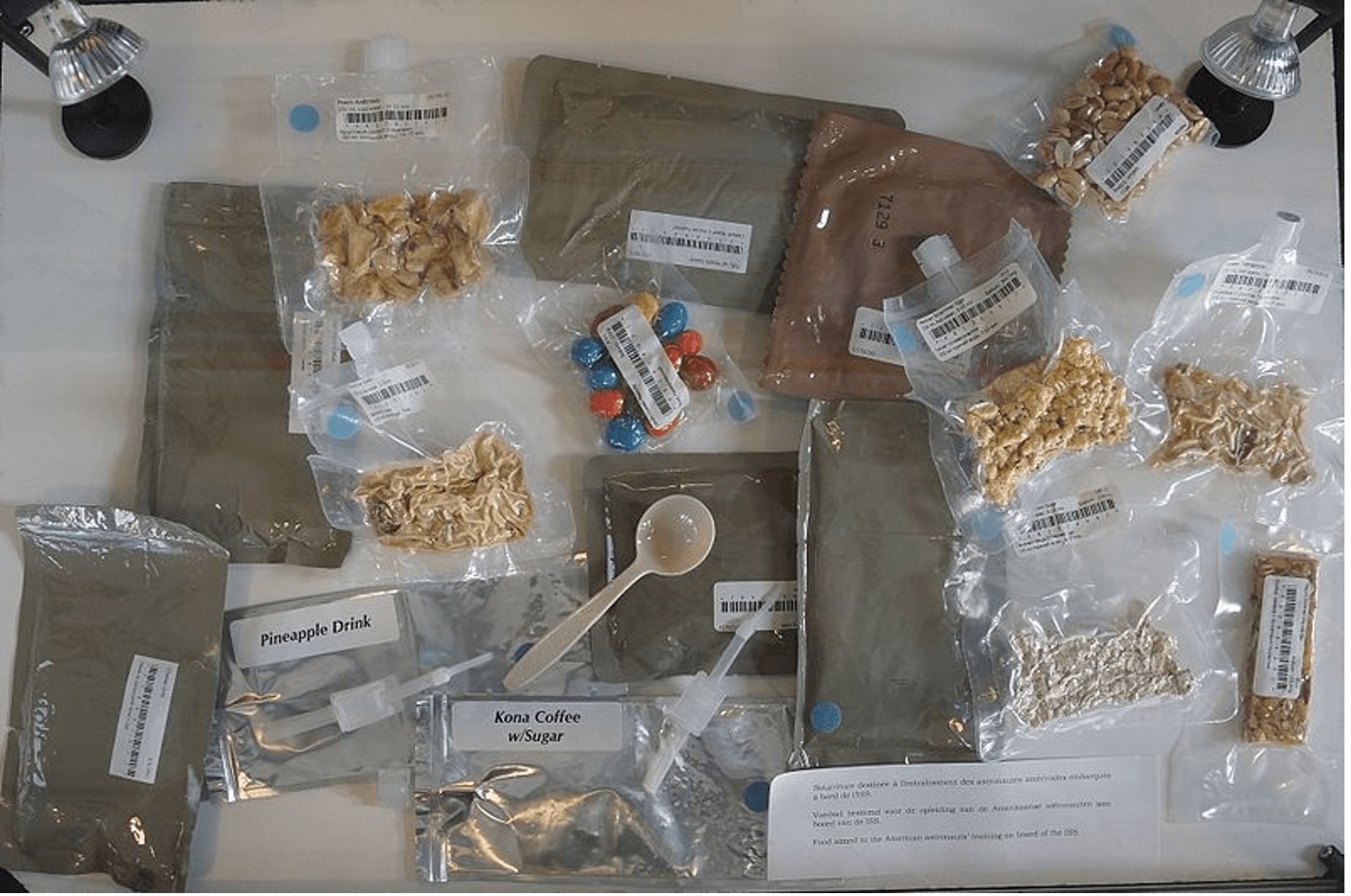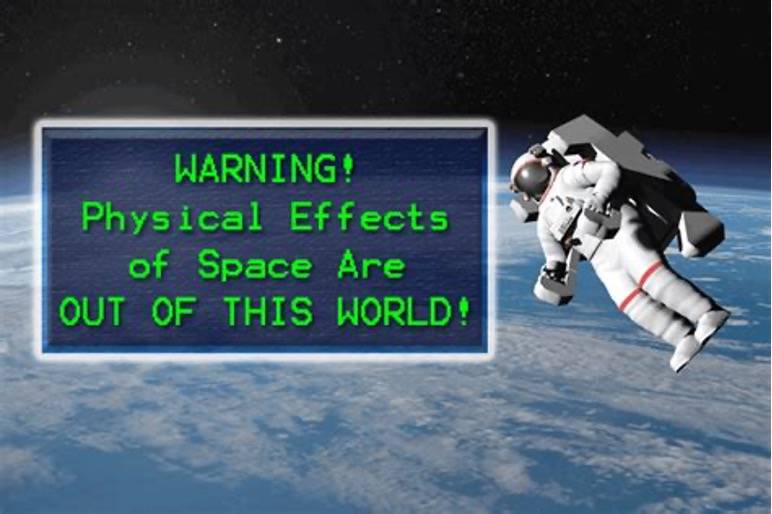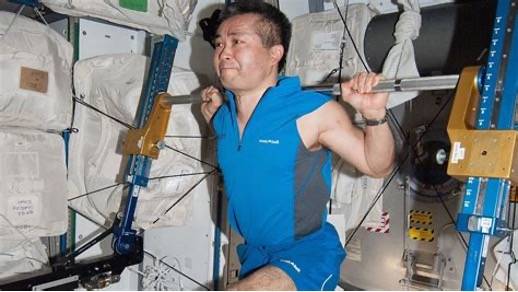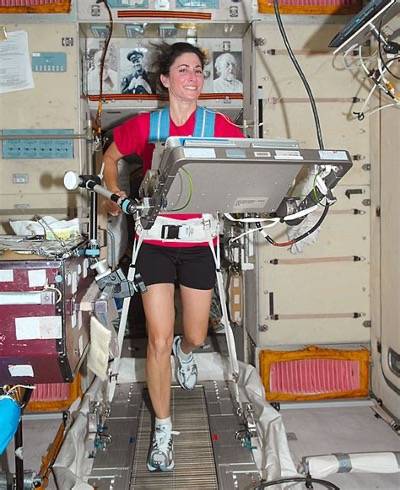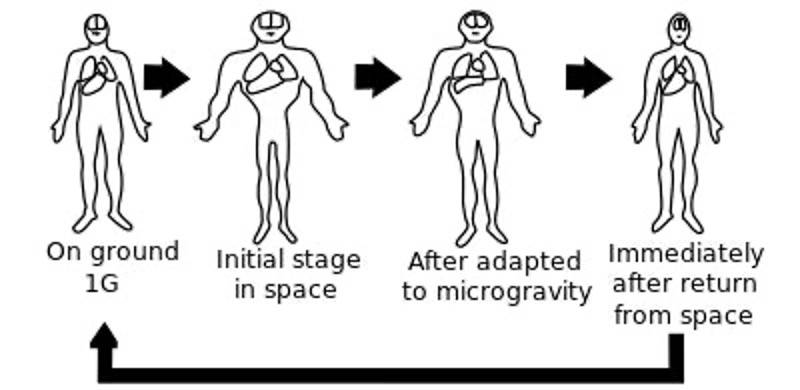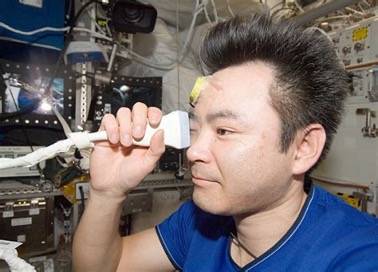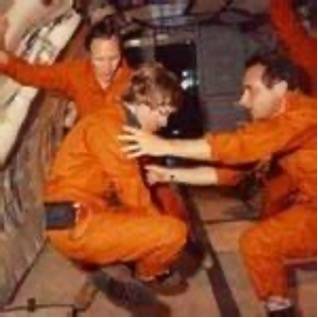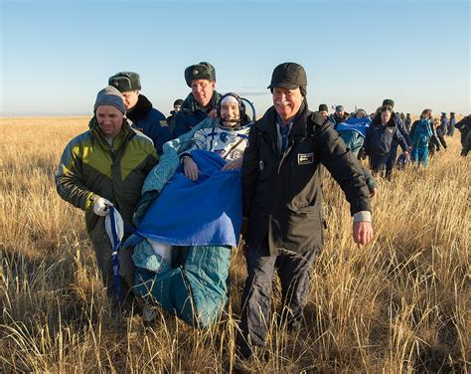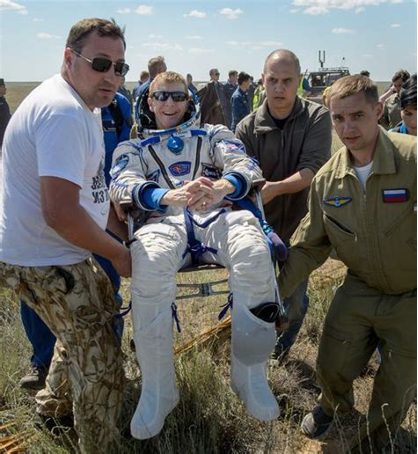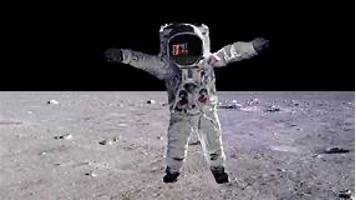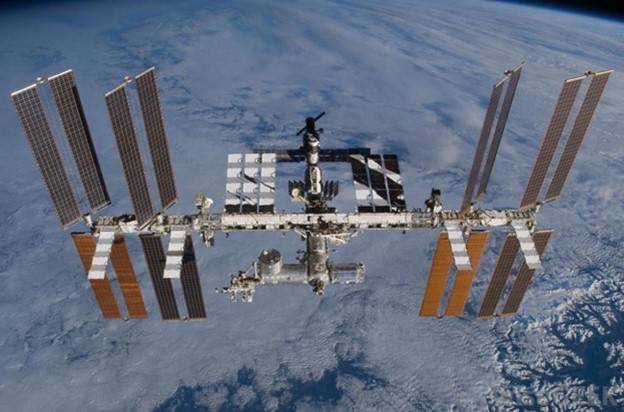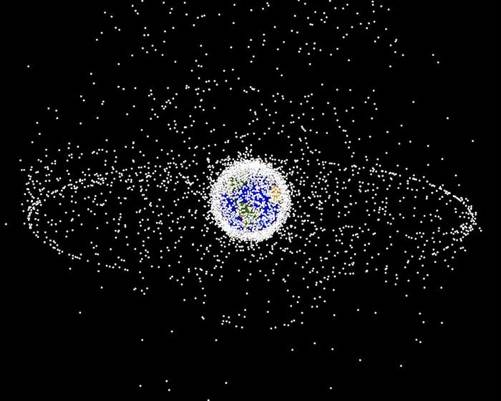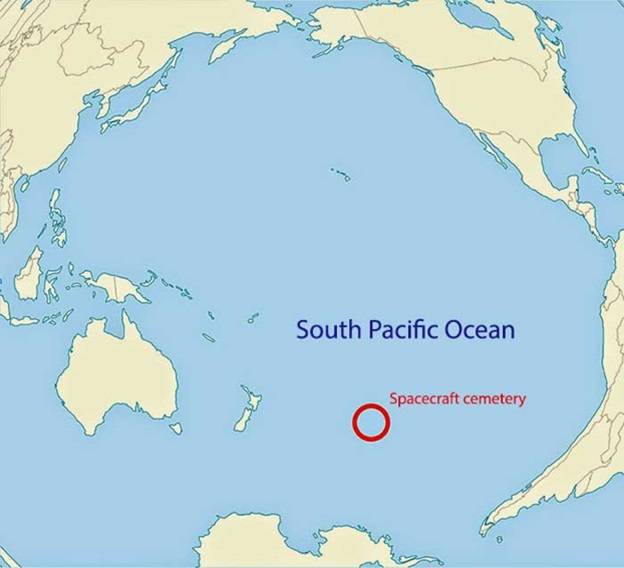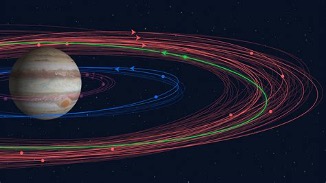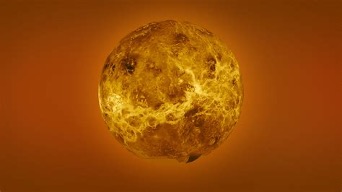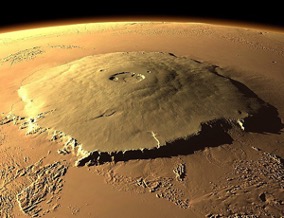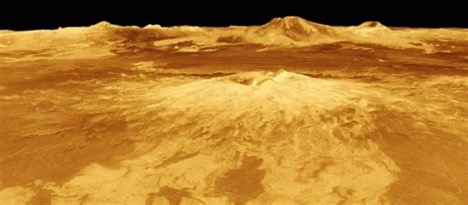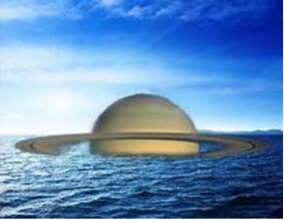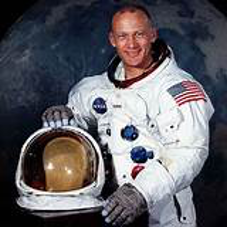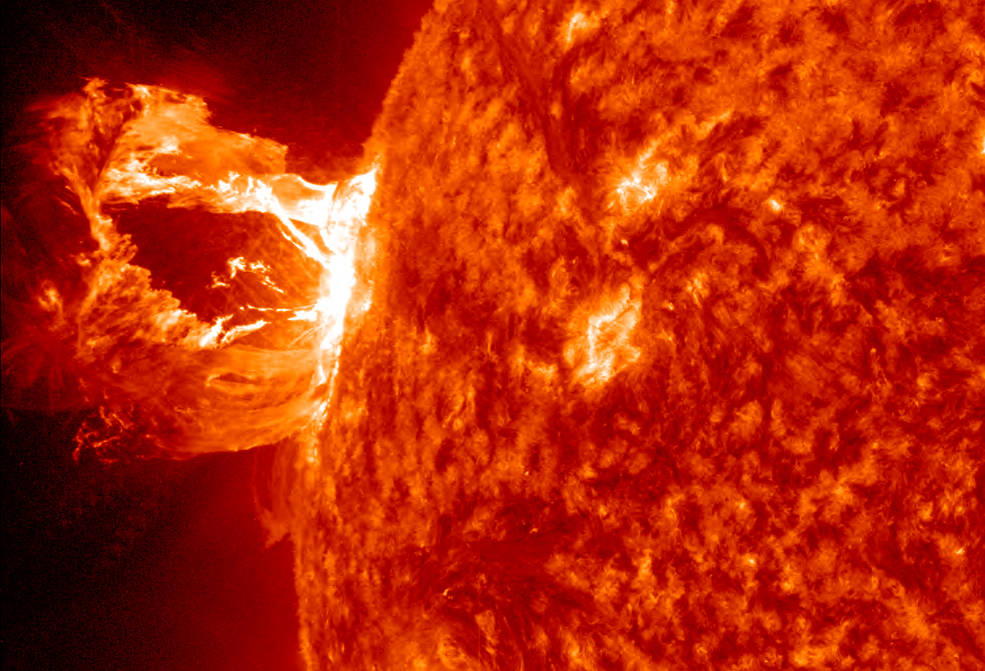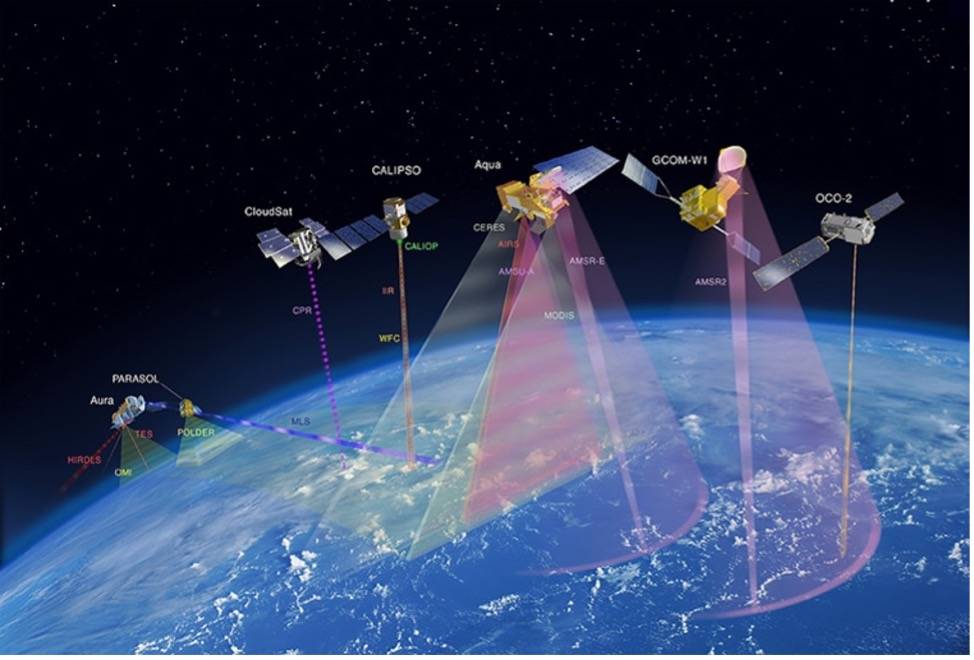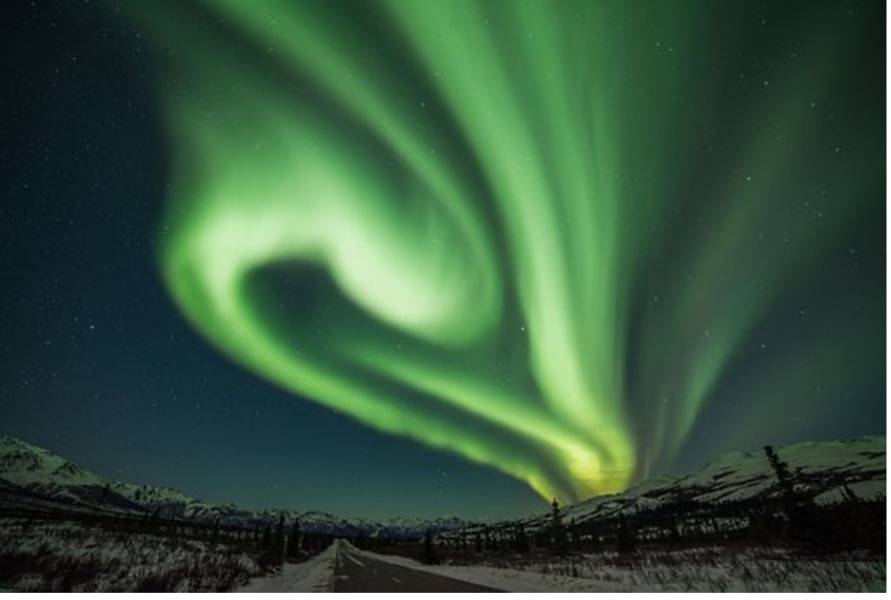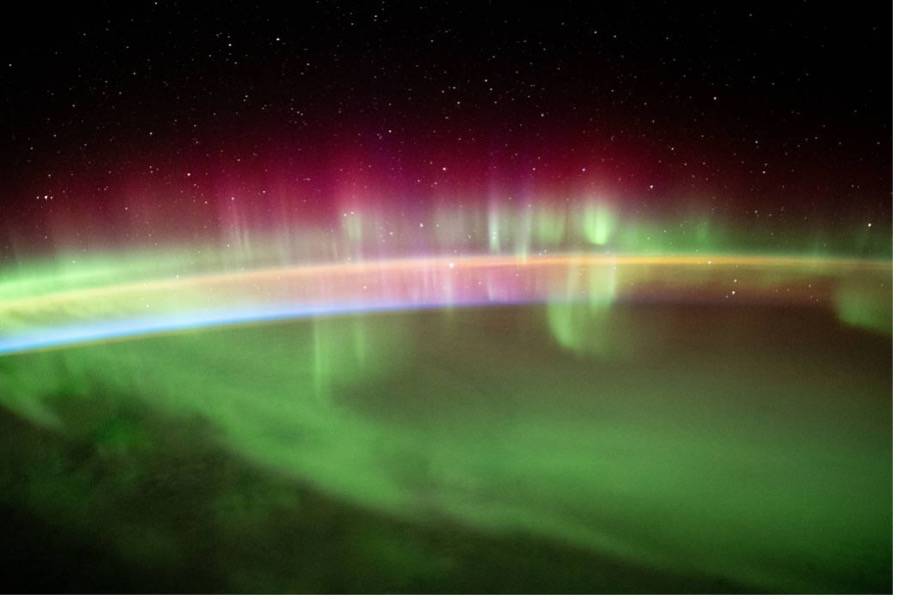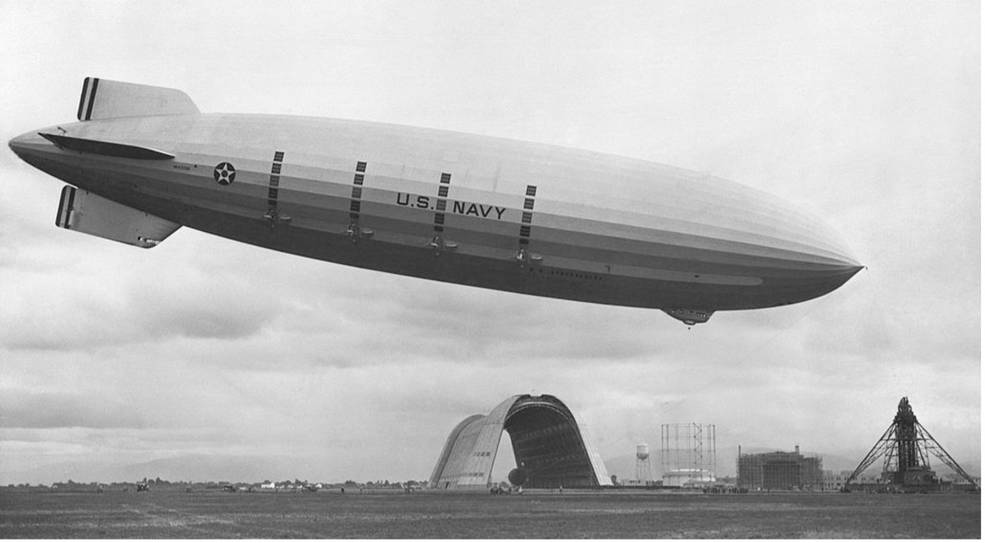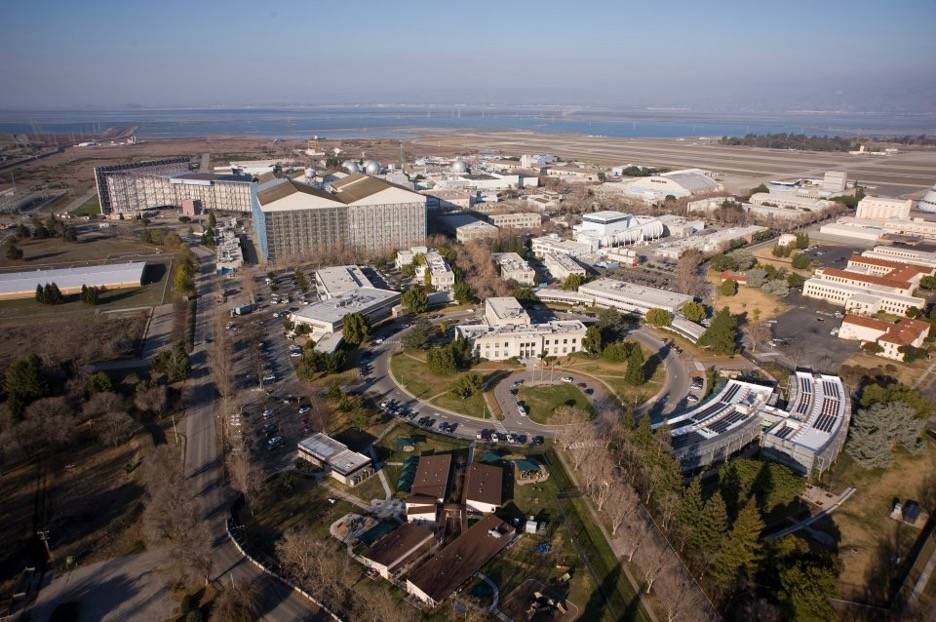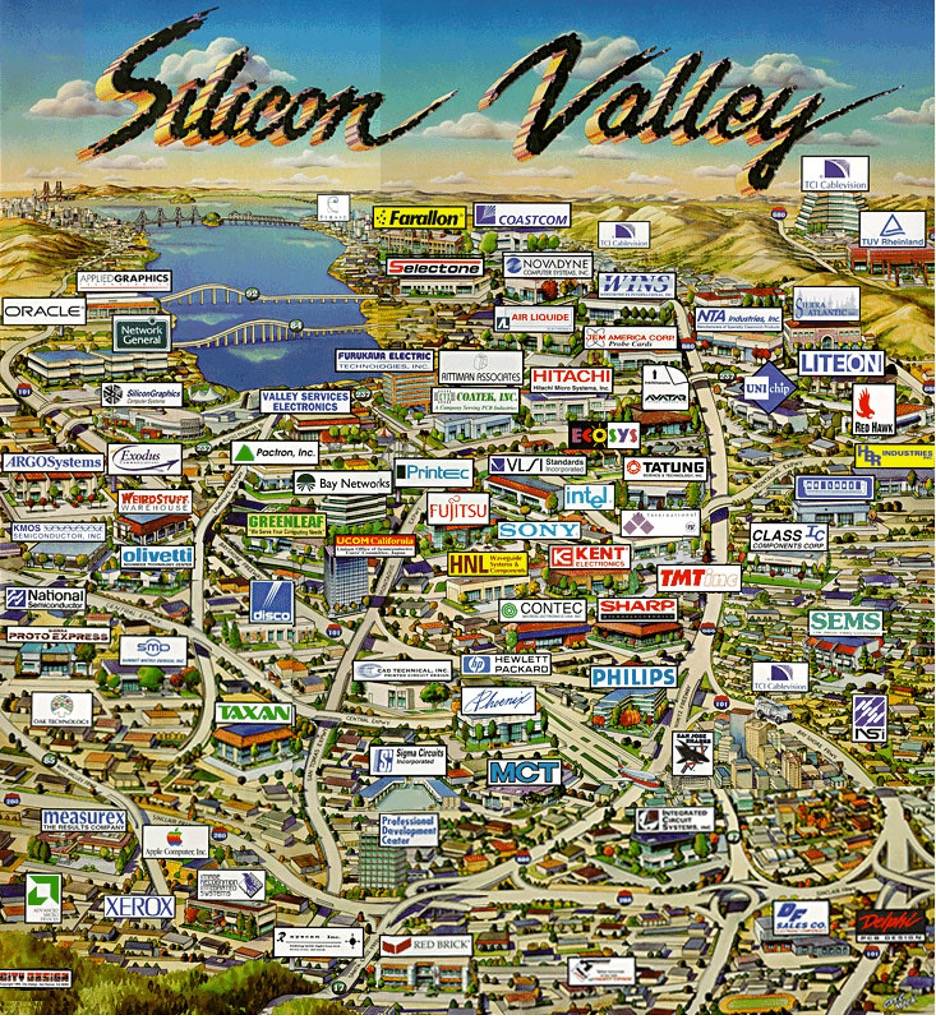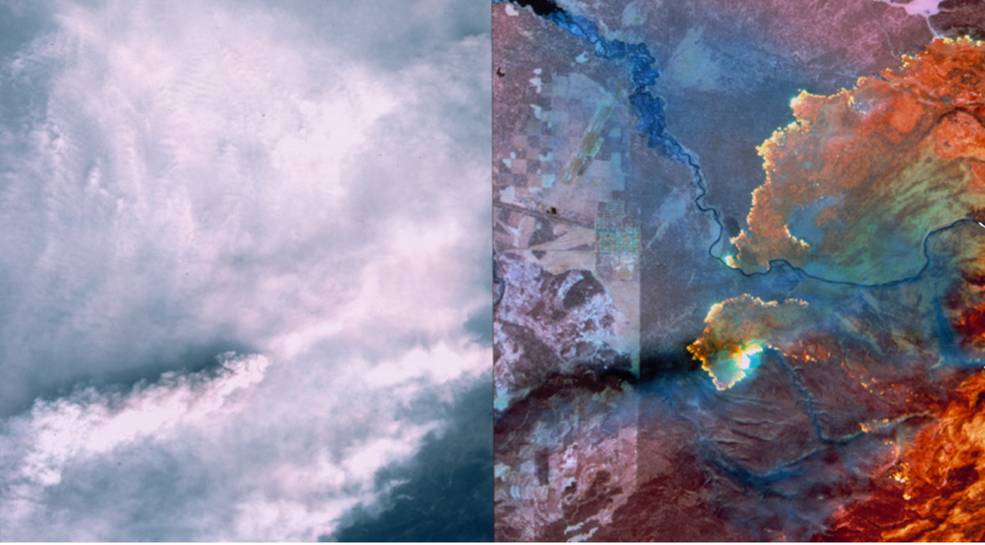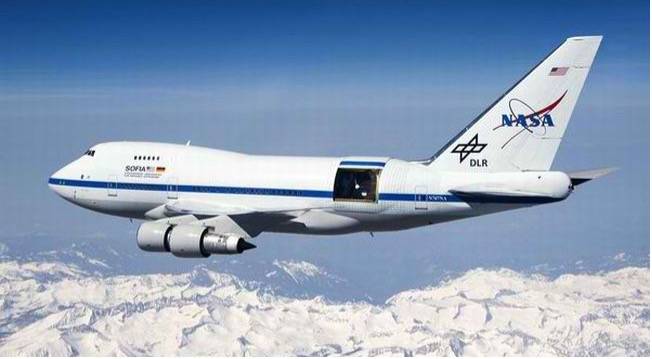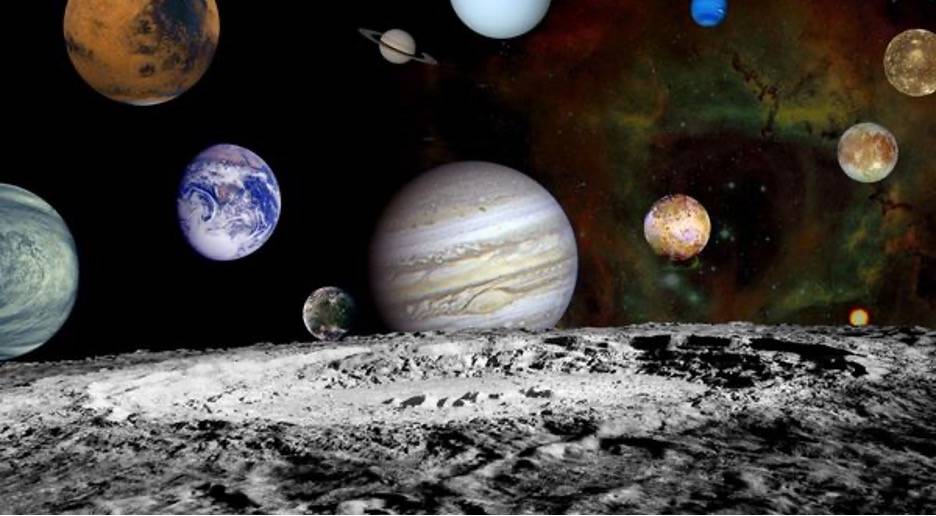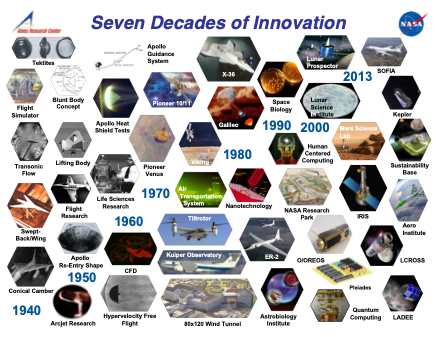December 2022
Interesting Fact: Is Interstellar Space Really Empty?
For thousands of years people have wondered about the vast area between stars, sometimes referred to as “empty space”. Scientists refer to this space as the interstellar Medium.
But is it really empty and how can we know for sure?
http://www.vatseduserve.com/2017/11/what-is-space-is-it-really-empty-or….
There is a very common misconception that space is completely empty. Well, the fact is that space is almost empty but not completely empty as believed wrongly. It contains a very low density of particles such as plasma, electromagnetic radiations, cosmic rays, neutrinos and other quantum phenomena like dark matter and dark energy which are yet to be studied thoroughly. It is almost empty since these particles are spread over a very large distance leading to such a low density that space appears to be almost empty. But since space has these particles present, it is confirmed that space is not completely empty.
The fact that we can look out far into the galaxy means that there must be very little matter between stars — otherwise it would absorb all the starlight. Nevertheless, interstellar space is not entirely empty. 99% of the interstellar medium consists of very low density gas. How low?
The air we breathe has a density of approximately 1019 molecules per cubic centimeter. (One cubic centimeter = 1 milliliter = 1/1000 liter).
By contrast, the lowest density regions of interstellar space contains approximately 0.1 atoms per cubic centimeter.
The remaining 1% of the interstellar medium consists of dust. That’s right, dust — like the stuff that accumulates on your bookshelves and under your bed.
The properties of interstellar dust:
- Composition: carbon, metals, silicates, and ice
- Size of grains: 500 nanometers or less in diameter (1 nanometer = 1 billionth of a meter)
- Number density of grains: 1 per million cubic meters (That density, by the way, is equivalent to having a few dust motes floating around in a football stadium.)
Half the interstellar gas is compressed into only 2 percent of our galaxy’s volume. These relatively high density regions are called clouds or nebulae (“nebula” is simply the Latin word for “cloud”). The densest nebulae can have densities of 10,000 molecules per cubic centimeter (or sometimes even more).
The other half of the interstellar gas is spread over the remaining 98 percent of the galaxy’s volume. The lowest density gas has a density of 0.1 atoms per cubic centimeter or less. (The Solar System, by the way, seems to be located within a large, low-density bubble within the interstellar medium.)
How do we know that the interstellar medium is there at all, given that it’s so low in density, and so nearly transparent?
Sometimes we know the interstellar medium is there because it emits light. An emission nebula is a hot, ionized cloud, surrounding a hot, luminous star, thus possessing a surface temperature of tens of thousands of degrees. The gas in the emission nebula is heated by ultraviolet light from the star, and like all hot, low-density gas, produces an emission line spectrum.
Sometimes we know the interstellar medium is there because it absorbs light. A dark nebula is a cold, dense cloud, containing a high concentration of dust. A dark nebula is dusty enough to be opaque at visible wavelengths. Thus, a nearby dark nebula blocks our view of more distant stars, making it look as if there were a “hole in the heavens” – a dark spot with no stars. The dust in a dark nebula, heated by starlight, re-radiates the light at infrared wavelengths. Thus, a `dark nebula’, though dark at visible wavelengths, is luminous at infrared wavelengths.
Sometimes we know the interstellar medium is there because it scatters light. A reflection nebula is a dusty cloud surrounding a star. The dusty cloud is visible because the dust reflects starlight. The scattered starlight is always very blue, even if the star itself is red. Why is this? The individual dust grains, which are comparable in size to the wavelengths of visible light, are more efficient at scattering blue light than red light. A reflection nebula is blue because we are seeing scattered starlight. Stars seen through a dusty cloud are red because we are seeing the light left over after all the blue light has scattered away. In a similar way, our sky is blue because we are seeing scattered sunlight. A sunset is red because we are seeing the light left over after all the blue light has scattered away.
Space is a vast stretch of emptiness or rather a stage wherein all the events of the cosmos play out. This space is the universe and the universe is this space. Observable Space stretches out to a distance of 90 billion kilometers and contains every celestial object we have ever known from planets and moons to stars and galaxies and all kinds of electromagnetic radiations. Interestingly this space has features comparable to a trampoline. Einstein said that space can warp and curve in the presence of mass (this gives us gravity). When there is no mass, space is completely smooth and flat. Now suppose we have the power to remove matter from this universe. First we choose to remove the visible matter. What are we left with? We are left with the dark part (not visible) of the universe i.e. dark matter and dark energy. Now suppose we remove all this as well, what are we left with? Are we left with just empty space? Yes…. Or maybe not…
After we discarded all the matter (both dark and light) from the universe, we are supposed to be left with just the space part of the universe which is empty. Now, we think it is empty, but it is not. The question that remains is, what is left here? To answer that we must shrink to the quantum scale. Here we find that space is not only filled with stuff but is extremely violent as well. This is what you see-
What is going on? Well these wave-like structures that you observe in the picture here , are fluctuations in the quantum field. These energy fluctuations in the quantum field are giving out two particles (energy gets converted to mass). One of these is a matter particle and the other is an anti-matter particle. These two interact and annihilate each other to release the same energy again which dissipates into the quantum field (therefore the law of conservation of mass is not annihilated).
Einstein said space is smooth and flat in the absence of mass. But here you see all these bizarre formations in space. This is the reason as to why it is extremely difficult to unite two of the greatest theories ever created- the quantum field theory and general relativity. General relativity says space is smooth and flat but Quantum Mechanics says it is rough and violent. The theory which has arrived the closest to uniting these two is the string theory but it is still far from completion.
It is interesting that most explanations seeking to answer this question do so in terms of the number of atoms (or fractions of atoms) within a given space (such as a cubic centimeter). But atoms themselves are mostly empty space. A hydrogen atom is about 99.9999999999996% empty space. if a hydrogen atom were the size of the earth, the proton at its center would only be about 200 meters (600 feet) across. Our human bodies don’t fare much better, being 99.9999999% “empty space”. That must mean we are all empty-headed! Something to think about.
Thanks and attribution:
http://www.astronomy.ohio-state.edu/~ryden/ast162_3/notes11.html Prof. Barbara Ryden (ryden@astronomy.ohio-state.edu)
http://www.vatseduserve.com/2017/11/what-is-space-is-it-really-empty-or.html
https://physeeks.com/is-empty-space-really-empty/ (Varun Shankar)
https://r4dn.com/how-much-of-atom-is-empty-space/
https://www.theaunicornist.com/2010/11/how-close-are-we-to-theory-of.html
http://pixgood.com/stars-space-texture.html%5B/caption%5D
November 2022
Fasten Your Seat Belts!
In 3.75 billion years the Milky Way and Andromeda galaxies will collide. The Andromeda Galaxy is approaching the Milky Way – where our solar system is – at rate of around 110 kilometers per second (68 mi/s) and eventually the two will collide to form a giant elliptical galaxy.
This illustration shows a stage in the predicted merger between our Milky Way galaxy and the neighboring Andromeda galaxy, as it will unfold over the next several billion years. In this image, representing Earth’s night sky in 3.75 billion years, Andromeda (left) fills the field of view and begins to distort the Milky Way with tidal pull. Credits: NASA; ESA; Z. Levay and R. van der Marel, STScI; T. Hallas; and A. Mellinger
This illustration shows a stage in the predicted merger between our Milky Way galaxy and the neighboring Andromeda galaxy, as it will unfold over the next several billion years. In this image, representing Earth’s night sky in 3.75 billion years, Andromeda (left) fills the field of view and begins to distort the Milky Way with tidal pull.
Credits: NASA; ESA; Z. Levay and R. van der Marel, STScI; T. Hallas; and A. Mellinger
Dateline: May 31, 2012: NASA astronomers have announced they can now predict with certainty the next major cosmic event to affect our galaxy, sun, and solar system: the titanic collision of our Milky Way Galaxy with the neighboring Andromeda Galaxy. The Milky Way is destined to get a major makeover during the encounter, which is predicted to happen four billion years from now. It is likely the sun will be flung into a new region of our Galaxy, but our Earth and solar system are in no danger of being destroyed.
“Our findings are statistically consistent with a head-on collision between the Andromeda Galaxy and our Milky Way Galaxy,” said Roeland van der Marel of the Space Telescope Science Institute (STScI) in Baltimore.
The solution came through painstaking NASA Hubble Space Telescope measurements of the motion of Andromeda, which also is known as M31. The galaxy is now 2.5 million light-years away, but it is inexorably falling toward the Milky Way under the mutual pull of gravity between the two galaxies and the invisible dark matter that surrounds them both.
So what about the seemingly throwaway line “but our Earth and solar system are in no danger of being destroyed? How can that possibly be?
More from NASA:
“After nearly a century of speculation about the future destiny of Andromeda and our Milky Way, we at last have a clear picture of how events will unfold over the coming billions of years,” said Sangmo Tony Sohn of STScI.
The scenario is like a baseball batter watching an oncoming fastball. Although Andromeda is approaching us more than 2,000 times faster, it will take 4 billion years before the strike.
Computer simulations derived from Hubble’s data show that it will take an additional two billion years after the encounter for the interacting galaxies to completely merge under the tug of gravity and reshape into a single elliptical galaxy similar to the kind commonly seen in the local universe.
Although the galaxies will plow into each other, stars inside each galaxy are so far apart that they will not collide with other stars during the encounter. However, the stars will be thrown into different orbits around the new galactic center. Simulations show that our solar system will probably be tossed much farther from the galactic core than it is today.
To make matters more complicated, M31’s small companion, the Triangulum galaxy, M33, will join in the collision and perhaps later merge with the M31/Milky Way pair. There is a small chance that M33 will hit the Milky Way first.
The universe is expanding and accelerating, and collisions between galaxies in close proximity to each other still happen because they are bound by the gravity of the dark matter surrounding them. The Hubble Space Telescope’s deep views of the universe show such encounters between galaxies were more common in the past when the universe was smaller.
A century ago astronomers did not realize that M31 was a separate galaxy far beyond the stars of the Milky Way. Edwin Hubble measured its vast distance by uncovering a variable star that served as a “milepost marker.”
Edwin Hubble (1889-1953)
Hubble went on to discover the expanding universe where galaxies are rushing away from us, but it has long been known that M31 is moving toward the Milky Way at about 250,000 miles per hour. That is fast enough to travel from here to the moon in one hour. The measurement was made using the Doppler effect, which is a change in frequency and wavelength of waves produced by a moving source relative to an observer, to measure how starlight in the galaxy has been compressed by Andromeda’s motion toward us.
Previously, it was unknown whether the far-future encounter will be a miss, glancing blow, or head-on smashup. This depends on M31’s tangential motion. Until now, astronomers had not been able to measure M31’s sideways motion in the sky, despite attempts dating back more than a century. The Hubble Space Telescope team, led by van der Marel, conducted extraordinarily precise observations of the sideways motion of M31 that remove any doubt that it is destined to collide and merge with the Milky Way.
“This was accomplished by repeatedly observing select regions of the galaxy over a five- to seven-year period,” said Jay Anderson of STScI.
“In the worst-case-scenario simulation, M31 slams into the Milky Way head-on and the stars are all scattered into different orbits,” said Gurtina Besla of Columbia University in New York, N.Y. “The stellar populations of both galaxies are jostled, and the Milky Way loses its flattened pancake shape with most of the stars on nearly circular orbits. The galaxies’ cores merge, and the stars settle into randomized orbits to create an elliptical-shaped galaxy.”
It is likely the sun will be flung into a new region of our galaxy, but our Earth and solar system are in no danger of being destroyed. Bottom line: According to astronomers, our Milky Way galaxy and the Andromeda galaxy will collide in four billion years but it’s unlikely the Earth will be physically destroyed by the collision. It’s not out of the question, but in general the stars in galaxies are spaced sufficiently sparsely that direct collisions between stars are rare.
The merging of galaxies will, however, radically affect their shape. For example, two spiral galaxies can merge and form an elliptical galaxy. Sometimes even more than two galaxies can collide with each other. Although galaxies have a lot of starts, it is very unlikely that stars from both galaxies actually collide.
For an eye-popping animation of this distant future cataclysmic event, see the following. https://www.youtube.com/watch?v=fMNlt2FnHDg
This animation depicts the collision between our Milky Way galaxy and the Andromeda galaxy. Hubble Space Telescope observations indicate that the two galaxies, pulled together by their mutual gravity, will crash together about 4 billion years from now. Around 6 billion years from now, the two galaxies will merge to form a single galaxy. The video also shows the Triangulum galaxy, which will join in the collision and perhaps later merge with the Andromeda/Milky Way pair.
Credits: Visualization Credit: NASA; ESA; and F. Summers, STScI | Simulation Credit: NASA; ESA; G. Besla, Columbia University; and R. van der Marel, STScI
Download video (no annotations)
For more images, video and information about M31’s collision with the Milky Way, visit: https://hubblesite.org/contents/news-releases/2012/news-2012-20.html
Thanks and attribution:
https://www.nasa.gov/mission_pages/hubble/science/milky-way-collide.html
October 2022
Interesting Fact: How do spacecraft find their way?
Here on earth we operate mainly in two dimensions and have many helps in finding our way. For years, printed maps assisted by road signs and convenient service stations, provided all the help needed to get us from point A (our homes) to point B (Grandma’s house).
Oceans made navigation more difficult, with neither roads nor signs, but seafarers did fairly well using the compass, sextant, lighthouses, and accurate clocks.
Air travel added a third dimension along with the problem of reduced visibility in bad weather, but compasses, beacons, and later radio technology, enabled accurate navigation. And all of these have benefitted greatly from the relatively recent development of satellite based GPS (Global Positional System) technology.
But how do rockets and spacecraft find their way in space, especially in deep space, with few if any of the helps mankind has relied upon for thousands of years? Even GPS is of little value in space because the 24 satellites that make up the GPS “constellation” transmit their signals toward Earth. If you’re located below the satellites and have a receiver capable of detecting the signals, you can reliably determine your location. Cruising along the planet’s surface? You’re good to go. Flying in low-Earth orbit (LEO)? You’re covered. Venture above LEO, however, and your handy GPS receiver will quickly find itself above the satellite constellation and, as a result, no longer be able to receive a signal. Put another way: GPS satellites only transmit down, not up.
So how do spacecraft navigate with precision in an environment devoid of all of these helps? Interestingly much of the work of getting a spacecraft to its destination is done before it is launched. Since all objects in the solar system are constantly moving, scientists can, by knowing the clockwork of the solar system, calculate well enough to predict where a spacecraft’s destination will be, when to launch and how fast to go to meet it in space. In addition to the movement of the objects in the solar system, scientists must take gravity in account. Gravity exerted by large bodies like planets and the Sun in the solar system will “bend” the flight of a spacecraft. But if a flight is planned carefully, a spacecraft can use the gravity of planets and moons to do a flyby or be pulled into orbit. And much of this “aiming” of spacecraft is done prior to launch, so the huge launch vehicle that puts it into space can push it onto a course that will take it to the right place. Once a spacecraft is in flight, small course corrections can be performed.
Of course, accuracy incalculating allof these variables is vital. Spacecraft go very long distances and have inertia, which means that they will keep going in a straight line unless something changes that. If that line is off by even a tiny bit, they will keep going on that path, getting more and more off course, until they are far from their intended target. And when that happens, sometimes the mistake cannot be corrected, as spacecraft often do not have enough fuel to make large course corrections. By the time the error is realized the object in space they were supposed to fly to may have moved a long distance from where it was supposed to be.
Current navigational techniques use a network of earthbound tracking stations that look up and out into space. When a rocket leaves our planet for Mars, Jupiter or beyond, ground crews beam radio waves from the tracking stations out to the vessel. Those waves bounce off the craft and return to Earth, where instruments measure the time it took the waves to make the journey and the shift in frequency caused by the Doppler effect. Using this information, ground crews can calculate the position of the rocket in space.
But imagine you want totravel to the outer reaches of the solar system. When your spacecraft reaches Pluto, you’ll be 3,673,500,000 miles (5.9 billion kilometers) away from Earth. A radio signal sent by a tracking station would take 5.5 hours to reach you and then another 5.5 hours to travel back (assuming the waves were traveling at the speed of light), making it more difficult to pinpoint your exact location. Travel even farther, and the accuracy of earthbound tracking systems falls off even more.
In the early days of space travel, navigators could tell a spacecraft where to go by calculating its position from Earth and sending the location data to space in a two-way relay system that could take anywhere from minutes to hours to deliver directions. This method of navigation meant that no matter how far a mission traveled through the solar system, the spacecraft was still tethered to the ground, waiting for commands from our planet.
That limitation posed obvious problems for a future crewed mission to another planet. How can astronauts navigate far from Earth if they don’t have immediate control over where they’re going? And how can they accurately land on another planet when there’s a communication delay that affects how quickly they can adjust their trajectory into the atmosphere?
Clearly, a better solution would be to place a navigational instrument on the spacecraft so it could calculate its position independently. That’s where NASA innovations like the Deep Space Atomic Clock (DSAC) and pulsar navigation come in.
Deep Space Atomic Clock – NASA.gov
First, a little background: GPS uses extremely precise measurements of time to make calculations. Each GPS satellite contains an atomic clock, and its time is synchronized with a receiver’s. A receiver can calculate the range to the satellite by multiplying the time it takes the satellite’s signal to reach the receiver by the speed of the signal, which is the speed of light. If it takes 0.07 seconds for the signal from a satellite to reach the receiver, then the satellite’s range is 13,020 miles (186,000 miles per second × 0.07 seconds). An atomic clock small enough to fly on a mission but precise enough to give accurate directions could eliminate the need for this two-way system. NASA’s Deep Space Atomic Clock, a toaster-size device launched in 2017, is the first GPS-like instrument small and stable enough to fly on a spacecraft, enabling it to know where it is without needing to rely on data from Earth. Future navigators will send a signal from Earth to a spacecraft and like its Earthly cousins, the Deep Space Atomic Clock onboard would measure the amount of time it took that signal to reach it. The spacecraft could then calculate its own position and trajectory, essentially giving itself directions.
Deep Space Atomic Clock
A rocket could make similar calculations without an on-board atomic clock if it could receive accurate time signals emitted by something out in space. As luck would have it, the universe contains more than a few highly accurate timekeeping devices. They’re known as pulsars — rapidly rotating neutron stars that emit regular pulses of electromagnetic radiation. Pulsars were first discovered in 1967 by student radio astronomer Jocelyn Bell and her thesis advisor Tony Hewish. The radio pulses they recorded were uncannily steady–so much so that some astronomers wondered if they were picking up signals from extraterrestrial civilizations. The correct explanation was even stranger: Pulsars are spinning neutron stars packing the mass of the sun into a sphere about 20 km across. Whirling around thousands of times each hour, they beam radio pulses into the cosmos in the style of a rapid fire lighthouse. Since then, about 1,800 pulsars have been discovered mainly via their radio emission. A fraction of pulsars go beyond radio; they also emit pulses of visible light, X-rays, and even high-energy gamma-rays.
Artist rendition of pulsar courtesy of nrao.edu
At one point in its life, a pulsar was living large and burning bright. Then it used up its nuclear fuel and died in a massive explosion. The product of that explosion was a rapidly spinning, highly magnetized object whose poles emitted powerful beams of energy. Now, as the dead star spins, the beams sweep around, much like the beacon of a lighthouse. An observer on Earth can’t see the star itself, but he can see the pulses of light that come streaming through space.
Pulsar
Some pulsars blink on and off every few seconds; others blink far more rapidly. Either way, they always pulse with a constant frequency, which makes them useful in keeping time. In fact, as timekeeping devices, pulsars rival atomic clocks in terms of their precision. In 1974, a scientist at the Jet Propulsion Laboratory — G.S. Downs — first proposed the idea of using pulsars to help spacecraft navigate through the cosmos. The concept remained on paper because scientists still didn’t know enough about the enigmatic stars and because the only instruments available to detect pulsars — radio telescopes — were enormous.
But over the years, the field has advanced as astronomers have continued to discover pulsars and to study their behavior. Initially scientists discovered the first millisecond pulsars, which have periods of less than 20 milliseconds and subsequently they found that certain millisecond pulsars emitted strong X-ray signals. All of this work has made it possible to move pulsar navigation from paper to practice as NASA navigators help build a future where spacecraft can safely and autonomously find their way, flying themselves to destinations like the Moon, Mars, and beyond. The sky is no longer the limit!
Thanks and attribution:
https://www.qrg.northwestern.edu/projects/vss/docs/Navigation/zoom-get-going.html
https://science.howstuffworks.com/how-is-gps-used-in-spaceflight.htm
https://heasarc.gsfc.nasa.gov/docs/nicer/
https://www.jpl.nasa.gov/news/news.php?feature=7427
https://scitechdaily.com/nasa-researchers-test-deep-space-atomic-clock-dsac/
https://science.nasa.gov/science-news/science-at-nasa/2008/17oct_gammaraypulsar/
https://thelivingmoon.com/46jkrog08/02files/Neutron_Stars_Pulsars_and_Magnetars.html
September 2022
Interesting fact: What do astronauts eat?
As you can probably imagine, eating in space is a lot different from eating here on earth. Down here, it doesn’t matter how messy or odorous your food is — you pretty much just go on eating without a second thought. But in space, food is carefully selected and prepared to keep astronauts safe – and healthy.
Did you know that some foods are banned in space? According to NASA zero gravity and little storage space seriously limits astronauts’ menu options. Here’s what’s off limits in outer space.
Bread
Didn’t expect this, did you? In 1965, two NASA astronauts took a corned beef sandwich with them in space. They learned that crumbs—from bread, crackers, cookies, etc—don’t do well in space, as they float around and can fly into an astronaut’s eyes or interfere with important equipment. The crumbs indeed flew everywhere, and since then bread has been banned in space. That’s why you’ll find tortillas used instead of bread on all spacecraft traveling into orbit or beyond. Tortillas are perfect for space travel because they don’t mold easily or crumble, although they tend to spoil after just 6 months. This problem was eventually solved when Taco Bell created an extended-life tortilla that could lasted up to a year. Yum!
Crackers and Chips
For the same reason, when you eat a handful of crackers or chips in Earth’s gravity, it’s easy to brush away the annoying crumbs your snack left behind. In space, this seemingly minor inconvenience could become disastrous. Think of all the nacho cheese-flavored “Dorito dust” left on your fingers after finishing a bag. That’s all going to end up in the air as a contaminant. Or worse, in someone’s lungs. So . . . . . no crunchy treats for space explorers.
Fish
There are a few reasons why you don’t want to bring fish into space. First, it’s going to go bad fairly quickly. And the best space food is food you can store for long periods of time without worrying about it spoiling. Second, if someone in your office has ever decided to microwave leftover fish for lunch, well, imagine smelling that and not being able to escape it.
Soft drinks
Back in the day, Coca-Cola attempted to create a special pressured can of Coke that wouldn’t lose its carbonation in microgravity, according to NASA. It seems a funny thing happens to carbonation without gravity: nothing! On Earth, a big part of soda’s appeal is its effervescence, but with bubbles in a state of “free float,” fizzy drinks don’t fizz. As astronauts found out in the ‘80s and ’90s when soda made brief appearances in space, warm, flat carbonated drinks don’t go down quite as easily as they do back home. Worse yet, they come up much too easily. To put it gently, carbonated drinks can cause the same burping phenomenon we know on earth, but it doesn’t happen the same way in space since gas cannot separate from food due to the absence of gravity. In microgravity the food you just ate floats to the top of your stomach, so when you burp, you may well cause food to come out with it, a phenomenon common enough to have a name: “wet burping”. Aren’t you glad you didn’t ask? Eeeew!
Salt & pepper
Why, you ask? It’s because they can’t be sprinkled. Small particles of salt, pepper, or other seasonings would simply float, rather than land on food, and could find themselves in eyes, noses, or in sensitive electronic equipment. There is a fix, however (NASA always has a fix): Spacefarers are provided with liquified salt and pepper.
Fresh milk
Fresh milk is not allowed because it requires refrigeration something we take for granted on earth but is not available in space. In place of fresh milk, the dehydrated kind, which takes up only a little space and doesn’t require refrigeration. It has been a staple of international space missions since the 1960s.
Ice cream
The real stuff can’t make the trek to outer space—there are no freezers on space shuttles—but freeze-dried astronaut ice cream can and has gone up as dessert.
Pizza
While not exactly banned from space, pizza isn’t on astronauts’ most requested foods list. “You can’t get a crispy crust,” says Vicki Kloeris, NASA’s Johnson Space Center space food manager. Pizza Hut once delivered pizza in space and it tasted terrible. It doesn’t have the crunch and tends to be soggy so astronauts themselves rejected it.
Alcohol
At one time it was allowed and although the Russians had a lot of fun with it the idea soon fell into disfavor. In 1972, alcohol (Paul Masson Rare Cream Sherry, to be specific) was on the menu for an upcoming Skylab 4 mission, but when the public got wind of the plan, many sent angry letters to NASA and the idea was nixed. “Astronauts represent a form of purity,” said scientist and astronaut Edward G. Gibson. “As soon as you taint that purity with alcohol [some people] really get upset.” And since NASA depends on keeping taxpayers happy . . .
Other interesting food facts from space:
The first food eaten in space was caviar and meat pate. In 1961, Russian Cosmonaut Yuri Gagarin was the first human in space and he ate a rather stylish first meal, according to the European Space Agency. But it seemed like he was more concerned about sausages. In his final last words before the flight, he allegedly joked, “The main thing is that there is sausage: To go with the moonshine,” according to Space.com. For the record, there was no moonshine.
In 2018 the University of Southampton Spaceflight Society proposed a plan to send lettuce seeds to Mars. The seeds would ideally self-germinate inside a growth chamber. The lettuce would take four weeks to grow, and it would terminate upon completion to ensure that no biological material contaminates Mars.
During the first missions to space, one of the most popular food staples was bacon. In 1968, the United States had its first manned Apollo mission to space. And the crew of Apollo 7 preferred bacon. The item was so popular that is was practically eaten every day in the subsequent Apollo 8 and 9 missions. Apollo 8 crew astronaut Jim Lovell even said, “Happiness is bacon squares for breakfast”.
Do astronauts prefer spicy food in space? (Duh!) That’s because you’re congested in space due to fluids rising in microgravity. “Your sinuses clog up and your tongue kind of swells up,” Astronaut Chris Hadfield told PBS. So you need something strong that you can actually taste. Hadfield’s favorite food item in space is shrimp cocktail, because of its spicy sauce.
So what can astronauts actually eat in space?
Remove all the “best” snack foods, and what’s left for an astronaut to enjoy? According to NASA, nothing that requires refrigeration makes it into any mission. Most food starts out dehydrated, but choices are familiar — including meat, eggs, and fruit.
Astronauts eat three meals a day: breakfast, lunch and dinner. Nutritionists ensure the food astronauts eat provides them with a balanced supply of vitamins and minerals. Calorie requirements differ for astronauts. For instance, a small woman would require only about 1,900 calories a day, while a large man would require about 3,200 calories. An astronaut can choose from many types of foods such as fruits, nuts, peanut butter, chicken, beef, seafood, candy, brownies, etc. Available drinks include coffee, tea, orange juice, fruit punches and lemonade.
Bon Appetit!
Additional Resources
- More to Explore: Space Food Health and Nutrition—Games, videos and stories for elementary students.
- Video: Pizza Night
- Video: Eat Like an Astronaut
- Video: Pudding the Space Way!
- Video: Peanut Butter and Jelly in Space
- Video: How to Prepare (Thanksgiving) Food in Space
- Video: All You Ever Wanted to Know About Space Food
- Video: Everything About Living in Space
- Food for Thought—Eating in Space Educator Guide
Thanks and attribution:
https://www.rd.com/list/foods-banned-space/
https://www.proprofs.com/discuss/q/1268279/which-foods-are-banned-in-space
https://www.buzzfeed.com/natashaumer/things-you-probably-didnt-know-about-space-food
https://www.popsci.com/blog-network/vintage-space/when-bacon-flew-moon-or-spacebacon/
https://www.pbs.org/newshour/science/astronauts-crave-tabasco
https://www.space.com/11359-secret-details-yuri-gagarin-human-spaceflight-50-years.html
https://www.nasa.gov/audience/foreducators/stem-on-station/ditl_eating
August 2022
Interesting fact: Biophysiology in Space
There are four things an astronaut will always do during their time in space. Eat, sleep, call home, and exercise. That last one is very important for maintaining their health. The reason is because the effects of zero gravity on the body over time are not good ones, and no one knows this more than astronauts who have returned from a long duration in space. What many astronauts experience upon return is fatigue, atrophied muscles, and loss of bone density. The problem lies in the way our bodies adapt to the type of work we do. When we work out, we gain muscle and bone density, however the exact opposite will happen if you don’t. To prevent this, they do as much as four hours of exercise per 16 hour period.
Astronaut exercising
Astronaut exercising
The amount of stress your bones take, in addition to calcium and magnesium, is essentially what determines your bone density. In a zero gravity environment, where there is no stress to the bones, even with a calcium rich diet your bones will start to break down. Researchers have shown that on average the human body will lose approximately 1-1.6% of their bone mineral density per month. This takes place primarily in the spine, neck, and pelvis. This is called skeletal unloading, and it happens because your body loses its ability to rebuild bone cells. The effects of this are similar to osteoporosis, and can lead to stress fractures and breaks. One piece of equipment to prevent this is a treadmill with straps that pull you down to simulate the effects of gravity.
The human skeleton is subject to bone loss in space due to lack of gravity.
Exercise counters this effect.
The human skeleton is subject to bone loss in space due to lack of gravity. Exercise counters this effect.
If you think about it this way, zero gravity means zero weight, which rules out any exercise that requires lifting weights. Since nothing has any weight, you don’t need to use any of your muscles. When you don’t use something it atrophies, because your body sees no reason to keep it. It is just an extra expense of energy that you’re not using. The only way to combat this is with tension style workouts. Like those thigh blasters and tension bands. Of course, this is NASA, so the equipment is more sophisticated than a simple thigh blaster.
Space travel has a similar effect on other human tissue, especially muscles and organs, including the heart. This is because you don’t need muscles to support yourself in a weightless environment. Once in orbit, astronauts’ muscles almost immediately start shrinking and shedding the extra tissue that their bodies assume is no longer need.
Space medicine is a developing medical practice that studies the health of astronauts living in outer space. The main purpose of this academic pursuit is to discover how well and for how long people can survive the extreme conditions in space, and how fast they can re-adapt to the Earth’s environment after returning from space. Space medicine also seeks to develop preventive and palliative measures to ease the suffering caused by living in an environment to which humans are not well adapted.
At NASA’s Ames Research Center in California’s Silicon Valley, Erin Flynn-Evans has been investigating the quality of astronauts’ sleep during spaceflight to better understand how sleep disturbances, such as noise and uncomfortable temperatures, cause sleep deficiency, which can throw off their circadian rhythms. Docking and undocking with the International Space Station requires astronauts to “slam-shift” their sleep patterns, which causes sleep disruption, much like people on the Earth who work rotating night shifts.
Astronaut sleeping on a wall in low gravity
Sleep rhythms can be disrupted during long space flights.
Flynn-Evans and her team at Ames worked with Harvard Medical School and Brigham and Women’s Hospital, both in Boston, to conduct a study to evaluate causes of sleep deficiency and the use of sleep-promoting medication by astronauts during spaceflight. Because mission operations often dictate completion of tasks during the biological night and sleep during the biological day, the team investigated whether circadian misalignment was associated with adverse sleep outcomes before and during spaceflight missions. One finding: when crewmembers slept when their biological clocks were promoting sleep, they slept longer and used fewer sleep medications. When they slept when their biological clocks were not promoting sleep, they had more disrupted sleep and used more sleep medication.
During the experiment, NASA researchers interviewed the astronauts and evaluated journal entries in order to better understand how they were being affected by sleep loss. They discovered that space station astronauts as well as shuttle astronauts slept for just six hours per night on average, when most mission schedules called for 8.5 hours. Another finding revealed that where astronauts launched into space made a significant difference in disruptions to sleep patterns. In the weeks before astronauts took flight, those launching from Baikonur, Kazakhstan, compared to launching from Cape Canaveral, Florida, experienced better sleep.
Space travel also has an effect on vision. A 2013 study examined the eyes of 27 astronauts who had spent an average of 108 days on board the ISS. NASA researchers found that many of them had eye abnormalities after returning from space. MRI scans showed that nine of the astronauts had bloating around their optic nerves and six of the astronauts had eyeballs that were physically flattened out in the back. While this is definitely cause for concern, none of the astronauts have reported any serious trouble seeing and NASA is conducting a more comprehensive follow up study.
Eye abnormalities due to space flight are a subject of NASA research.
Eye abnormalities due to space flight are a subject of NASA research.
Living in space can depress astronauts’ immune systems, according to a study published in 2014. “Things like radiation, microbes, stress, microgravity, altered sleep cycles and isolation could all have an effect on crew member immune systems,” Brian Crucian, NASA biological studies and immunology expert, who led the study, said in a statement. “If this situation persisted for longer deep space missions, it could possibly increase risk of infection, hypersensitivity, or autoimmune issues for exploration astronauts.” That means the astronauts planning to spend a year in space may be more likely to get sick.
Sickness from a variety of effects of space travel is intensely studied by NASA.
Extended space travel also throws off one’s coordination. It’s a struggle returning to Earth after spending months in microgravity. Astronauts lose their definitive sense of up and down while they’re in space because the vestibular system can’t tell where the ceiling is and where the ground is in a weightless environment. Eventually the body recalibrates, but some astronauts
are a little shaky on their feet at first.
It also takes a toll on the psyche. On the ISS, astronauts are literally a world away from anything familiar, and it’s not like they can pack up and leave any time they want.
Astronauts undergo a rigorous psychological screening before they can even start training for space. Still, feelings of isolation and confinement are a big risk. Combine that with sleep deprivation, the absence of the comfort of gravity, and dulled senses, and you can begin to imagine the psychological toll long-term spaceflight can take. Many astronauts have described it as the hardest thing they have ever done. But also the most exhilarating and fulfilling!
Thanks and Attribution:
https://thespacestore.com/blogs/blog/the-importance-of-astronauts-working-out-in-space
https://en.wikipedia.org/wiki/Effect_of_spaceflight_on_the_human_body
July 2022: How Many Satellites are up in Space?
The space age began on October 4, 1957 with the launch Sputnik 1, the first artificial earth satellite. This tiny spacecraft lasted just three months in orbit, finally burning up in the Earth’s atmosphere. Following in its historic footsteps, many more spacecraft have been sent into Earth’s orbit, around the Moon, around the Sun and the other planets, and even out of the Solar System itself. Some of the most notable of these include the International Space Station, the Hubble Space Telescope, and many Earth observation satellites.
The International Space Station is the largest man-made satellite orbiting the Earth
About a twentieth are in Medium-Earth Orbit, around 20,000 kilometers (13,670 miles) up, which are generally global positioning satellites used for navigation. A small handful are in elliptical orbits, where their orbit brings them closer and further to the Earth.
The rest are in geostationary orbit, at an altitude of almost 36,000 kilometers (22,000 miles).
If we could see these satellites from Earth’s surface, they would appear to hang motionless in the sky. The fact that they remain over the geographic same area means they provide the perfect platform for telecommunications, broadcast or weather observations.
But there are many, many more artificial objects orbiting the Earth. In this collection of space debris we’re talking spent boosters, dead satellites, and even misplaced tools and gloves. According to the United States Space Surveillance Network (USSSN), there are more than 21,000 objects larger than 10 cm (4 inches) orbiting the Earth. Just a small fraction of these are operational satellites. It’s estimated there are an additional 500,000 (!) bits and pieces between 1 and 10 cm in size.
According to the Index of Objects Launched into Outer Space, maintained by the United Nations Office for Outer Space Affairs (UNOOSA), there were 5,774 individual satellites in space at the end of March, 2020, an increase of 16% compared to the start of 2019. UNOOSA recorded that 580 objects were launched into space during 2019, the largest annual number ever recorded and almost 30% more than occurred in each of the previous two years. However, that record number is very likely to be smashed in 2020 as by the end of March there had already been 356 launches! The growth of the satellite population over the last decade has been driven by the development of the CubeSat, a type of miniaturized satellite for space research that is made up of multiples of 10 cm × 10 cm × 10 cm cubic units, and the large number of new Earth Observation satellite constellations.
You’d expect that most of these satellites would be operational wouldn’t you? Well, you might be surprised. Using this database together with the UNOOSA Index shows that there are currently 2 666 active satellites in orbit around the Earth, which represents approximately 46% of the 5,774 objects in space. In effect, this means that there are 3,108 hunks of metal flying around the Earth at thousands of miles per hour doing absolutely nothing.
A computer-made image of objects in Earth orbit currently being tracked. About 95% of the objects in this illustration are orbital debris, not functional satellites. The dots represent the current location of each item, but are not scaled to Earth. The image provides a good idea of where the greatest orbital debris is.
The main purposes for the operational satellites are:
- Communications: 1,211 satellites – increase of 55% since the start of 2019.
- Earth observation: 884 satellites – increase of 24.5% since the start of 2019.
- Technology development/demonstration: 312 satellites – increase of 40% since the start of 2019.
- Navigation/Positioning: 148 satellites – increase of 8% since the start of 2019.
- Space science/observation: 93 satellites– increase of 9% since the start of 2019.
- Earth science: 18 satellites – a decrease of 28% since the start of 2019.
It should be noted, however, that some of these satellites have multiple purposes.
According to the UCS database, the top five countries with the most operational satellites are:
- USA
- China
- Russia
- United Kingdom
- Japan
Breaking out the orbital types for these thousands of objects orbiting the planet yields the following:
- 1,918 in a Low Earth Orbit
- 137 in a Medium Earth Orbit
- 554 in a Geosynchronous Equatorial Orbit, also known as a geostationary orbit.
- 57 in an Elliptical Orbit
So what happens to old satellites that have stopped working or are no longer needed?
Like every other machine, satellites do not last forever. Whether their job is to observe weather, measure greenhouse gases in the atmosphere, or point away from Earth to study the stars, eventually all satellites grow old, wear out, and die, just like old washing machines and vacuum cleaners
So what can be done when a trusty satellite’s time has come? These days there are two choices, depending on how high the satellite is. For the closer satellites, engineers will use its last bit of fuel to slow them down. That way, they will fall out of orbit and burn up in the atmosphere. The heat from the friction of the air burns up the satellite as it falls toward Earth at thousands of miles per hour. Ta-da! No more satellite.
But what about bigger things like space stations and larger spacecraft in low orbit? These objects might not entirely burn up before reaching the ground. But there is a solution—spacecraft operators can plan for the final destination of their old satellites to make sure that any debris falls into a remote area. This place even has a nickname—the Spacecraft Cemetery! It’s in the Pacific Ocean and is pretty much the farthest place from any human civilization you can find.
Spacecraft Cemetery location
The second choice is to send the satellite even farther away from Earth. It can take a lot of fuel for a satellite to slow down enough to fall back into the atmosphere. This is especially true if a satellite is in a very high orbit. For many of these high satellites, it takes less fuel to blast it farther into space than to send it back to Earth. And what about those higher satellites that we blast farther away? They are sent into a “graveyard orbit.” This is an orbit almost 200 miles farther away from Earth than the farthest active satellites: 22,400 miles above Earth!
Why bother moving the old satellites? In the early days of space exploration, we didn’t worry so much about what would happen to the stuff we launched into orbit. These days, though, there is so much junk that we are worried one tiny collision could trigger a big chain reaction. This possibility is called the “Kessler Effect, after NASA space debris expert Don Kessler (JSC, Environmental Effects Project Office), who in 1978 observed that once past a certain critical mass, the total amount of space debris will keep on increasing: collisions giving rise to more debris and leading to more collisions, in a chain reaction or cascade in which each collision generates space debris that increases the likelihood of further collisions. One implication is that the distribution of debris in orbit could render space activities and the use of satellites in specific orbital ranges difficult for many generations.
To prevent such a disaster, anyone launching something into orbit these days has to have a plan to either send it into a graveyard orbit, or send it back down to burn up in Earth’s atmosphere.
So is that the end of it for these far-away satellites? As far as you and I are concerned it is. However, some of these satellites will remain in orbit for a very, very long time. Perhaps someday in the future, humans may need to send “space garbage trucks” to clean them up. But for now, at least, they will be out of the way.
But collisions are only part of the problem. Elon Musk’s company, SpaceX, recently launched 60 internet satellites into Earth’s orbit, with a plan to release 12,000 more satellites in the coming years. The venture, called Starlink, promises to increase internet access around the globe. But what SpaceX and other companies want to do is launch them into lower orbits so that they can beam internet and you don’t really observe any latency in signals so that the roundtrip flight time takes a less time to get to you. But, when you have satellites in a lower orbit, in order to provide that global coverage, you need a lot more satellites because they have to be able to see the entire planet. That’s why SpaceX is proposed sending nearly 12,000 satellites into space.
Now consider that professional astronomers are trying to take lots of pictures of really faint things far out in space. While they’ve had to contend with satellites in the past, Starlink is something different entirely, says Jonathan McDowell, an astronomer with the Center for Astrophysics at Harvard and the Smithsonian. The constellation will be made up of as many as 12,000 satellites. That’s “potentially as many visible satellites moving around on a dark night as there are stars visible,” McDowell says. This photo shows the kind of interference that alarms astronomers.
The Starlink satellites streak across a photo of distant galaxies taken by the Lowell Observatory. Victoria Girgis/Lowell Observatory
And SpaceX is not the only company looking at developing a global constellation. Other companies, including Amazon, are planning similar constellations. Space is about to get much more crowded, and there’s not a lot that astronomers can do about it. Although space companies are regulated by national governments, and the U.N. does have a treaty on the peaceful use of space, there’s no obvious forum for this kind of issue. “Space is still a little bit of the Wild West,” says Jessie Christiansen, an astronomer at CalTech. “We’re still trying to figure out who owns it and who gets to make the rules.”
SpaceX says it expects the satellites to grow dimmer as they reach their final orbits, and it’s looking into other ways to minimize the glare problem. The National Radio Astronomy Observatory says it has been working with SpaceX to minimize the impact. The International Astronomical Union, meanwhile, has encouraged national regulators to take the astronomical community’s concerns into account.
McDowell says he’s encouraged by the company’s response. “I think there’s room without regulation for a cooperative effort between the astronomy community and the Space X and other operators of mega constellations,” he says. But he says he also hopes the launch will trigger a broader conversation: “As a planet, we need at the global-governance level to have this discussion of how we manage the night sky as a resource.”
We should all hope they succeed.
Thanks and attribution:
https://www.pixalytics.com/satellites-orbiting-earth-2020/
https://spaceplace.nasa.gov/spacecraft-graveyard/en/
https://www.wisegeek.com/how-many-satellites-are-orbiting-the-earth.htm
https://www.pbs.org/newshour/show/spacex-plans-launch-of-12000-satellites-into-earths-orbit
April 2022: A Space Quiz
You remember the “pop” quizzes that were a staple of your high school and college years? Well here is one about space that tests your knowledge of the world of astronomy. But relax: it won’t be graded.
1. Which two planets in our solar system have no moons?
2. Which planet has the most moons?
3. What are the hottest and coldest planets?
4. Where is the highest mountain in the solar system?
5. Which planet has the most volcanoes?
6. Which planet has a moon that orbits backwards?
7. How much of the universe is visible from Earth?
8. How far away is outer space?
9. True or false: there are more stars in the Milky Way galaxy than there are trees on earth.
10. Which planet in our solar system could float in water?
Bonus question: Edwin “Buzz” Aldrin was the second man to walk on the moon. His birth name was Edwin Eugene Aldrin Jr. How did he get the nickname “Buzz”?
Answers:
1. Mercury and Venus. And why don’t they have moons? Most likely because they are too close to the Sun. Any moon with too great a distance from these planets would be in an unstable orbit and be captured by the Sun. And if they were too close to these planets they would be destroyed by tidal gravitational forces. The zones where moons around these planets could be stable over billions of years is probably so narrow that no potential moon was ever captured into orbit, or created in situ when the planets were first being accreted. Any moon that Mercury might have had or tried to capture would be in an unstable orbit because the sun would tug at it. The moon would eventually either spiral away and orbit the sun or would get dislodged from a stable orbit around Mercury and crash into the planet. In Venus’s case, the answer isn’t so simple. Yes, Venus is also close to the sun, but its gravity is strong enough to be able to hold a moon. And yet it doesn’t have one. There are two primary theories to explain this. The first theory purports that Venus did have a moon, but the sun stole it away, as in Mercury’s case. The second theory, considered more probable, is more complicated and requires us to understand how earth got its moon. At one point in Earth’s past, a Mars sized body slammed into it, causing a partial evaporation of the earth and complete destruction of the body. The debris that flew off coalesced in orbit and formed the Moon. Similarly, the Double Impact Theory states that Venus was impacted twice. The first impactor collided with the planet when Venus used to rotate clockwise, like all the planets today do. This impact formed a Moon, not unlike the Earth’s own, in orbit around Venus. The theory goes that several million years later, an even bigger body impacted that planet, sending it into the retrograde rotation it has today. This change in the direction of rotation weakened the tidal forces on Venus’s moon, sending it slamming into the planet to disappear forever.
2. Jupiter with 79 moons. There’s a reason why Jupiter has so many satellites while other planets — ours, for instance — have so few. It all comes down to gravity. First, as Isaac Newton observed, there’s a positive correlation between the mass of an object and the strength of its gravitational field. Because the gas giants are so massive, they’re able to attract more satellites. A second theory is that Jupiter’s distance from the sun allows it to retain its moons more easily. Imagine if Jupiter and Mercury exchanged places. The sun would “steal” many of Jupiter’s moons, as it may have done with Mercury, which, as noted above, has no Moons.
3. The hottest planet is Venus at 464ºC (867ºF). Although Mercury at 427ºC (800ºF) is nearer to the sun, it is the second hottest because, unlike Venus, it lacks an atmosphere and thus experiences greatly varying temperatures throughout the day. Neptune at -200ºC (-328ºF) is the coldest. (It would have been Pluto if it was still a planet.) Average temperatures of other planets are: Earth: 15ºC (59ºF), Mars: -65ºC (-85ºF), Jupiter: -110ºC (-166ºF), Saturn: -140ºC (-220ºF) and Uranus: -195ºC (319ºF). Planets vary in temperatures as they vary in structure and distance from the sun. Temperatures are influenced by the distance of planets from the sun – as the distance increases, the temperature decreases. Both interior and exterior factors are responsible for temperature variations within the planets. The nature and composition of the atmosphere, for example, determines the amount of heat radiated and how much heat the planet retains.
4. The highest mountain in our solar system is Olympus Mons on Mars. It is 16 miles high, compared with 5.5 miles for Mount Everest on earth. How did Mars get such an enormous mountain? Like any planet, how Mars looks outside is tied to what goes on inside. Early on, Mars had really active volcanoes, fed by hot, rising blobs of rock from deep inside. But Mars doesn’t have tectonic plates that move over hotspots, like in Hawaii. So instead of getting a chain of volcanoes, you could keep building one huge one. And, with the lower gravity on Mars, that magma could be pushed to greater heights. Second level interesting fact: Olympus Mons is so large at its base that an astronaut on its peak wouldn’t know he or she was standing on a mountain because its slope would be obscured by the curvature of the planet itself!
5. Venus certainly did have many volcanoes in the past. Planetary scientists have identified more than 1,600 major volcanoes or volcanic features on Venus, and there are almost too many smaller ones to count. However, this may be something of a trick question, since while we know Venus had many, many volcanoes in the past, it is uncertain how many it may have today. First: why so many? Evidence suggests it somehow managed to completely invert its crust, resulting in massive quantities of volcanic features. By comparison, our planet is an active world geologically. We have volcanoes constantly erupting across the planet, especially in the regions where plate tectonics are most active. Wherever one plate is sliding against another plate, or one is passing underneath another, you can expect to see volcanoes erupting. According to scientists, Venus has no continents, nor surface water, nor plate tectonics. Furthermore, it is shrouded in thick clouds of carbon dioxide in its atmosphere, so you can’t have an orbiter easily take photographs of the planet’s surface. So right now, scientists have no idea if there are volcanoes on Venus. There could be a few spotty regions across the planet, where there is some activity, but none have been seen erupting in the present.
6. Neptune’s moon Triton orbits backwards and is the only large moon of any of the planets that does this. It is called a retrograde orbit and astronomers are unsure why Triton orbits Neptune this way. The leading hypothesis is that Triton was part of a binary Kuiper belt object, most likely the larger one. When the binary object passed by Neptune closely, gravitational interactions between the three bodies led to the smaller body of the binary gaining velocity and being ejected, while the larger Triton lost velocity and remained stuck in an orbit around Neptune. And it just happened to move in a direction opposite to those of Neptune’s other moons when it got close to Neptune.
7. Only 5% of the universe is visible from earth. Not because it is so far away but because 68% of the universe is dark energy and 27% is dark matter, neither of which is visible, even with a telescope. We know dark matter is real—the evidence is overwhelming. Something must be responsible for the extra gravity messing with the motions of stars and galaxies. If that doesn’t convince you, you can look to gravitational lensing—the bending of light around massive objects. The presence of dark matter accounts for the way the light from distant stars and galaxies is distorted as it travels through the universe, following the gravitationally induced curving of space-time itself. If motion and lensing don’t convince you, look at the evidence that galaxies existed within a billion years of the Big Bang. Without dark matter as a kind of cosmic glue, galaxies would have taken much longer to form, as the gravity of gas and dust and stars had to fight against the pressure of all that matter colliding and heating up. Or just take a look at the Bullet Cluster. It’s the aftermath of a cosmic collision in which clusters of galaxies collided but the bulk of the matter passed right through the collision, in the way only ghostly dark matter could.
One explanation for dark energy is that it is a property of space. Albert Einstein was the first person to realize that empty space is not nothing. Space has amazing properties, many of which are just beginning to be understood. The first property that Einstein discovered is that it is possible for more space to come into existence. Then one version of Einstein’s gravity theory, the version that contains a cosmological constant, makes a second prediction: “empty space” can possess its own energy. Because this energy is a property of space itself, it would not be diluted as space expands. As more space comes into existence, more of this energy-of-space would appear. As a result, this form of energy would cause the universe to expand faster and faster. Unfortunately, no one understands why the cosmological constant should even be there, much less why it would have exactly the right value to cause the observed acceleration of the universe.
Regarding dark energy, more is unknown than is known. We know how much dark energy there is because we know how it affects the universe’s expansion. Other than that, it is a complete mystery. But it is an important mystery. It turns out that roughly 68% of the universe is dark energy. Dark matter makes up about 27%. The rest – everything on Earth, everything ever observed with all of our instruments, all normal matter – adds up to less than 5% of the universe. Come to think of it, maybe it shouldn’t be called “normal” matter at all, since it is such a small fraction of the universe.
Correction: Dark energy surrounded by dark matter.
8. This is another loaded question and there is no universal consensus. Although there is no official solid boundary for where space begins, the Kármán line sits at 62 miles above sea-level and is conventionally used as the start of outer space in space treaties or for aerospace records keeping. What is the Kármán line you ask? In the 1900s, Hungarian physicist Theodore von Kármán determined the boundary to be around 50 miles up, or roughly 80 kilometers above sea level. Today, though, the Kármán line is set at what NOAA calls “an imaginary boundary” that’s 62 miles up, or roughly a hundred kilometers above sea level. Why 100 kilometers? Well, It is, after all, a nice round number. So outer space is only 62 miles away right? Not so fast!
While the Federation Aeronautique Internationale (FAI), which keeps track of standards and records in astronautics and aeronautics, defines space as beginning 100 kilometers up, the Federal Aviation Administration, the U.S. Air Force, NOAA, and NASA generally use 50 miles (80 kilometers) as the boundary, with the Air Force granting astronaut wings to flyers who go higher than this mark. At the same time, NASA Mission Control places the line at 76 miles (122 kilometers), because that is “the point at which atmospheric drag becomes noticeable”.
The reason for these contrasting opinions is there is no obvious distinction between “space” and “not space,” because Earth’s atmosphere doesn’t simply vanish; instead, it gradually becomes thinner and thinner over about 600 miles. So, surprisingly, the International Space Station—which orbits at an average altitude of 240 miles—would not be in space if “space” was defined simply as the absence of an atmosphere.
9. False. There are about three trillion trees on earth and only a measly 100-400 billion stars in the galaxy.
10. Although Saturn is the second largest planet in our solar system, it is also the lightest and the only one that could float in water because it is mostly made of gas, about 75% hydrogen and 25% helium. Thus, its density is less than liquid water.
Bonus. Aldrin got the nickname “Buzz” from his sister’s mispronunciation of the word “brother”, which became “buzzer”. In 1988, he legally changed his first name to “Buzz”.
Thanks and attribution:
https://www.thefactsite.com/100-space-facts/
https://www.worldatlas.com/articles/the-hottest-and-coldest-planets-of-our-solar-system.html
https://image.gsfc.nasa.gov/poetry/venus/q328.html
https://medium.com/teamindus/this-is-why-mercury-and-venus-are-moonless-d0733abb932e
https://science.howstuffworks.com/jupiter-have-79-moons-when-earth-just-has-one.htm
https://www.jpl.nasa.gov/edu/learn/video/mars-in-a-minute-how-did-mars-get-such-enormous-mountains/
https://www.answers.com/Q/Why_does_venus_have_so_many_volcanoes
https://www.quora.com/Why-does-Triton-one-of-Neptunes-moons-orbit-Backwards?share=1
https://science.nasa.gov/astrophysics/focus-areas/what-is-dark-energy
https://www.nasa.gov/mission_pages/planck/news/planck20130321.html
https://www.buzzfeednews.com/article/terripous/17-completely-mind-blowing-facts-about-outer-space
https://www.thefactsite.com/20-facts-about-saturn/
https://www.thefactsite.com/100-space-facts/
https://sparkonit.com/2017/06/01/space-starts-karman-line-100-km-altitude/
https://farm5.staticflickr.com/4088/4996788746_8926c507c1_z.jpg
https://www.treking.cz/astronomie/olympus-mons3.jpg
https://spaceplace.nasa.gov/how-many-moons/en/
March 2022: Solar Flares
The sun is a magnetic variable star that fluctuates on times scales ranging from a fraction of a second to billions of years. Solar flares, coronal mass ejections, high-speed solar wind, and solar energetic particles are all forms of solar activity. All solar activity is driven by the solar magnetic field.
As one form of solar activity, solar flares are a sudden explosion of energy caused by the tangling, crossing, or reorganizing of magnetic field lines near sunspots. The surface of the Sun is a very busy place. It has electrically charged gases that generate areas of powerful magnetic forces.
Flares are our solar system’s largest explosive events. They are seen as bright areas on the sun and they can last from minutes to hours. We typically see a solar flare by the photons (or light) it releases, at most every wavelength of the spectrum. The primary ways we monitor flares are in x-rays and optical light. Flares are also sites where particles (electrons, protons, and heavier particles) are accelerated. Solar flares are sometimes accompanied by a coronal mass ejection (CME for short). CMEs are huge bubbles of radiation and particles from the Sun. They explode into space at very high speed when the Sun’s magnetic field lines suddenly reorganize.
How do solar flares affect the earth?
Erupting from the sun when its magnetic fields high above the plasma surface become twisted, break apart and reconnect, solar flares result in a massive explosion and the potential ejection of energized particles that are sent hurtling toward Earth. These charged particles can have a wide range of effects, from electromagnetically knocking out satellites to charging up the northern lights (aurora borealis) and the southern lights (aurora australis).
- Effect on satellites:
While the Earth’s atmosphere provides some protection against the radiation from solar flares and mitigates some of their electrical effects, people and objects in orbit have considerably less protection. Modern society relies on satellites for everything from telephone communications to GPS tracking, and a powerful solar flare could significantly disrupt or even destroy many satellites, especially those in a high geosynchronous orbit that could easily be damaged by a powerful electromagnetic current coming off the sun. Ultraviolet radiation from the flare event could also heat up the Earth’s atmosphere, making it expand, which would result in an increased drag on orbiting satellites. This would result in either ‘zombie satellites’ that are no longer responsive to ground signals or satellites falling into Earth’s atmosphere and burning up.
Fortunately, the International Space Station flies in a low enough orbit that most solar flare effects are somewhat mitigated. While modern satellites contain protection against electrical disruption such as built-in Faraday cages, flares can still block signals to and from satellites and in some rare cases shut them down completely. This can lead to communication disruptions on Earth, shutting down international telephone links and television satellite feeds.
- Effect on the electrical grid:
Although technology allows people to convert the sun’s energy into electricity, that same source of energy is also capable of completely knocking out the energy grid, potentially leading to catastrophic conditions. Electromagnetic energy from a flare event is capable of charging the atmosphere. This phenomenon would in turn induce an abnormally high charge in power lines, blowing out both power transformers and stations. Destruction of the power grid would lead to many different kinds of problems for society, including a loss of ability to refrigerate food items and the breakdown of sewage and waste processing systems.
- Aurora Borealis and Aurora Australis:
In addition to affecting human activities, solar flare activity can also ramp up natural phenomena such as the aurora borealis (northern lights) and aurora australis (southern lights). These aurora light shows can normally be seen for most of the year and are driven by the stream of particles constantly emanating from the sun. When these particles interact with the upper atmosphere, they excite molecules in the air, and when these molecules come back down to their unexcited state, they release visible light. When a powerful solar flare event sends a high amount of charged particles into the upper atmosphere, these aurorae, which are normally visible only in higher latitudes, extend further and are more active and more intense.
- Increased lightning strikes:
A highly charged atmosphere from a solar flare event can also have another natural consequence: increased lightning strikes. According to a report from researchers at the University of Reading, increased solar activity can lead to an increase in the number of lightning strikes. That research somewhat contradicts previous theories suggesting that cosmic radiation from supernovae is behind the rate of lightning strikes on Earth. The researchers from the study have said that their findings, along with previous knowledge about the sun, will allow them to predict lighting rates in great detail.
- Broadcasting interruption:
Solar flares can also disrupt communication systems. The geomagnetic storms caused by a flare striking Earth produce electrical interference high in the atmosphere, affecting radio and other broadcast communication systems. Depending on the intensity of the flare, this can range from mild static interference to a complete blockage of communications for the duration of the storm. Shortwave communications in particular are vulnerable to disruption since they take advantage of electrical conditions in the Earth’s atmosphere to bounce signals across great distances.
Some other interesting facts about solar flares:
1. The fastest ejections reach Earth in less than two days
Solar flares are sometimes accompanied by coronal mass ejections (CMEs), huge outpourings of energy and material that travel at up to 650 miles (1,000 kilometers) per second.
2. They release ten million times more energy than a volcano
A volcanic eruption pales in comparison to a solar flare. In a matter of minutes a solar flare, thought to be caused by magnetic fields, can eject billions of tons of charged particles.
3. During peak times there are over 20 solar flares a day
When the Sun is at solar maximum, the period in its 11-year cycle when its activity is at its highest, the Sun can unleash over 100 solar flares every week.
4. They are almost as hot as the core of the Sun
A solar flare can have a temperature of several million degrees Kelvin. For comparison, the hottest natural temperature ever recorded on Earth was a relatively measly 330 degrees Kelvin (134 degrees Fahrenheit) in Death Valley, California.
5. A solar eruption once knocked out a power grid in Quebec
In March 1989 a huge CME, one of the largest on record, caused a geomagnetic storm in Earth’s atmosphere that crippled the Hydro-Quebec power grid in Canada.
6. A solar eruption could zap your computer
A solar storm might well have strange effects on electronics. The high-energy protons that reach the ground produce neutrons that pass right through the shielding around satellite and avionics systems. (Most computer systems lack even this shielding.) Extensive background radiation studies by IBM in the 1990s suggest that computers typically experience about one cosmic-ray-induced error per 256 megabytes of RAM per month. If so, a solar superstorm, with its unprecedented radiation fluxes, could cause widespread computer failures. Fortunately, in such instances most users could simply reboot.
Thanks and attribution:
https://www.nasa.gov/content/goddard/what-is-a-solar-flare
https://spaceplace.nasa.gov/solar-activity/en/
https://sciencing.com/solar-flares-affect-earth-4567146.html
https://pixabay.com/images/search/aurora%20borealis/
https://unsplash.com/photos/fgS1_6KzIA4
https://www.scientificamerican.com/article/solar-storms-fast-facts/
February 2022: Ames Through the Years
Recently Ames celebrated its 80th year as a premier U.S. government research center, which prompts some thinking about how that all came to be. Some of you know the basic story, but probably not all the details. Here is a brief history:
Ames Research Center is in the Valley of Heart’s Delight! At least that’s what they called the Santa Clara Valley 75 years ago when it was filled with fruit orchards, producing apricots, cherries, peaches, and pears by the boxcar load. In the spring, blossoming trees stretched from one end of the valley to the other, drawing crowds of tourists similar to those that flock to New England for the fall foliage tours.
One of the first intrusions into this idyllic setting came in 1931 when the government chose Sunnyvale as the west coast base for its lighter than air fleet and built the Sunnyvale Airship Station and its signature “Hangar One” to house the giant airship U.S.S. Macon.
The. Macon, shown here floating above its mooring mast, was designed for coastal protection and anti-submarine surveillance.
It was so large that it carried its own fleet of observation planes, which it lowered from a hook, then released while at flight altitude. Some of these “Sparrowhawk” airplanes had no landing gear and had to hook up again with the airship in order to be safely recovered.
The era of large airships was short-lived, however. The Macon arrived at NAS (Naval Air Station) Sunnyvale in October 1933, but just 18 months later was lost at sea off the coast of Monterey during a storm, effectively crippling the Navy’s lighter than air program.
The Sunnyvale base remained in government hands, however, and a few years later, on August 9, 1939, as World War II began, Congress authorized the construction of a second National Advisory Committee for Aeronautics (NACA) laboratory (the first one being in Langley, Virginia) for urgent research in aircraft structures. Ground was broken for the laboratory at Moffett Field, California, in December of that year and operations began in early 1941.
It was named the Ames Aeronautical Laboratory, after Joseph S. Ames, leading aerodynamicist, former president of Johns Hopkins University, and founding member and longtime chairman of NACA. Here’s an early aerial view of the beginnings of our wind tunnel research infrastructure.
Wind tunnels are central to Ames’ history. Several wind tunnels were opened in the 1940’s to test and refine aircraft, guided missiles, satellites, and reentry bodies. Of particular note are three tunnels later designated key national resources: the 40 x 80-foot wind tunnel, opened in 1944; the 12-foot subsonic wind tunnel, opened in 1946; and the Unitary Plan Wind Tunnel Complex, opened in 1955. These facilities enabled the American aircraft industry to dominate the skies in both commercial and military aviation, as well as in space exploration ever since. Almost all NASA manned space vehicles, including the Space Shuttle, were tested in the Unitary Wind Tunnels.
Ames’ initial mission was aeronautical research so the building of its many wind tunnels commenced immediately.
The 40×80 Foot subsonic wind tunnel, which is still operating today, was enlarged in the 1980’s when an 80×120 foot test section was added, enabling it to test a full sized Boeing 737 or a 1/3 scale Space Shuttle. The circulating airspeed inside this structure can exceed 300 knots, more than double that of a category 5 hurricane.
And if you think these early pictures of Ames look primitive, here’s one of Houston’s Manned Spacecraft Center, the predecessor of JSC, prior to groundbreaking.
In 1958, Ames became part of the newly established National Aeronautics and Space Administration (NASA). Ames’ most vital input to NASA’s top priority at the time, the lunar program, was the blunt body concept for reentry capsules, a concept tested and refined in the Center’s new Arc Jet facilities and hypervelocity ranges. An arc jet is a device in which gases are heated and expanded to very high temperatures and supersonic/hypersonic speeds by a continuous electrical arc between two sets of electrodes. The gases (typically air) pass through a nozzle aimed at a test sample in a vacuum, and flow over it, producing a reasonable approximation of the surface temperature and pressure and the gas enthalpy found in a high velocity, supersonic flow of the kind experienced by a vehicle on atmospheric entry.
The Arc Jets contributed to thermal protection for all NASA’s crewed programs, including the Space Shuttle, and also for planetary missions such as the Galileo Jupiter Probe. The Arc Jet complex will continue to be central to the research and development of materials suitable for heatshield applications.
In the 1960s, Ames emerged as a leading builder of advanced flight simulators. In particular, in 1969 the Flight Simulator for Advanced Aircraft became part of a wide range of simulators, equipment, and facilities developed by Ames to improve pilot workloads, cockpit design, and safety, among other things. Another, the Vertical Motion Simulator, still enables testing of a variety of aircraft as it did for the Space Shuttle program. All space shuttle pilot astronauts trained here on the VMS.
When NASA was created in 1958, the Ames Aeronautical Laboratory had filled in considerably and it was rechristened Ames Research Center, becoming an important part of NASA’s space exploration program. Ames played a critical role in man-vehicle systems research, aerodynamic analysis, flight simulation, and thermal protection. The blunt entry concept was developed here, as were the thermal tiles that protected the space shuttle. The saying went “if you want to fly in space, you go to Johnson or Kennedy. But if you want to come back, you have to come to Ames.” Today Ames plays a role in many of NASA’s missions in support of America’s space and aeronautics programs. It provides leadership in astrobiology and space sciences, earth science, small satellites, robotics, the search for habitable planets, supercomputing, intelligent/adaptive systems, advanced thermal protection, airborne astronomy, and a host of other efforts and advancements in support of NASA’s exploration initiatives.
While all this growth and development was going on at Ames, the integrated circuit was invented nearby, giving rise to the first wave of high tech companies to locate in what would become known as Silicon Valley: There are few orchards left now, having been replaced by an explosion of high tech companies building on the computer revolution. Fairchild, Intel, Hewlett-Packard, Atari, and Silicon Graphics, were soon followed by Apple, Oracle, Sun, Symantec, Cisco, Google, Netflix, Yahoo, eBay and hundreds of others. Ames has adapted to the new technological age by becoming NASA’s center for innovation in all areas of its strategic vision, and a wonderful place for scientists and engineers to advance their careers.
Ames’ legacy as an aeronautical center that predates NASA, continues in recognition of the fact that all space vehicles must successfully transit through the atmosphere. Aeronautical research is a pivotal strategic technology for the Agency. Researchers at Ames are contributing to this technology through their pursuits in aviation safety and efficiency, air traffic management, aero- and hydrodynamics, and the manufacture of turbomachinery.
Earth science researchers at Ames are also helping to apply NASA’s unparalleled air- and space-borne sensing technologies to advance our understanding of our own planet through studies of changing atmospheric phenomena and their effect on a wide range of vitally important earthbound necessities, from the air we breathe to the climate in which we live, to ecosystems on which we depend. Continuing research into greenhouse gas and arctic ice measurements, along with coral reef biodiversity, are just three of these vital research areas.
Space focused life science research was invented at Ames, in recognition of the critical need to understand the effects of the space environment on living organisms, including humankind. Now called Space Bioscience, this field is vitally important to advancing technologies in support of human spaceflight including microgravity and its effects on bone loss, tissue density, and DNA, all of which have enormous implications for long duration human space flight. Similar studies in radiation effects, hypergravity, and oxidative stress remind us that human adaptation to the space environment continues to be an enormous challenge.
Astrophysicists at Ames were among the first to utilize data from the long awaited Stratospheric Observatory for Infrared Astronomy (SOFIA), a research facility conceived, advocated, and successfully developed over many years by teams of Ames scientists and engineers. SOFIA is a large airborne telescope mounted on a Boeing 747-SP and represents a world-class observatory designed to complement the Hubble, Spitzer, Herschel and James Webb space telescopes while adding geographic flexibility and earthbound repairability to its many capabilities.
Other astrophysics research conducted by Ames scientists includes star formation and behavior, and the detection and search for habitable exoplanets using data from the Kepler Space Telescope, NASA’s principal mission to detect and characterize earth-sized planets around distant stars.
This research promises a greater understanding of the frequency of earth-sized planets in the universe, moving us a step closer to answering the age-old question: are we alone in the universe?
Needless to say, as we look back on 80 years of innovative research and support of NASA’s exploration vision, we are excited about the many and varied research opportunities that Ames continues to offer scientists and researchers who come here to continue that unique legacy.
January 2022: What would life on Mars look like?
We hear a lot these days about the search for habitable planets and life in the universe. This has conjured up a lot of ideas about what such life might actually look like. Hollywood, abetted by science fiction writers, has conjured up any number of fantastic descriptions. Perhaps the most famous came from Orson Welles’ broadcast of H.G. Wells’ sci-fi novel “The War of the Worlds” on the Mercury Theater of the Air on October 30, 1938, which featured a dramatic, if fictitious, description of the invasion of earth by an armada of spacecraft from Mars, carrying creatures of this frightening description:
“Good heavens, something’s wriggling out of the shadow like a gray snake. Now it’s another one, and another. They look like tentacles to me. There, I can see the thing’s body. It’s large, large as a bear and it glistens like wet leather. But that face, it . . . Ladies and gentlemen, it’s indescribable. I can hardly force myself to keep looking at it. The eyes are black and gleam like a serpent. The mouth is V-shaped with saliva dripping from its rimless lips that seem to quiver and pulsate. The monster or whatever it is can hardly move. It seems weighed down by . . . possibly gravity or something. The thing’s raising up. The crowd falls back now. They’ve seen plenty. This is the most extraordinary experience. I can’t find words . . . I’ll pull this microphone with me as I talk. I’ll have to stop the description until I can take a new position. Hold on, will you please, I’ll be right back in a minute.”1
Not to be outdone, other movies have enjoyed free imaginative reign in depicting what extra-terrestrial life might look like: herewith a sampling:
There probably isn’t room on the internet for all of the imaginative ideas about extraterrestrial creatures. But what are scientists actually looking for in their quest to find life beyond earth?
For an alien-seeking scientist, “life means any living form — including microbes”, astronomer Mercedes López-Morales, at the Harvard-Smithsonian Center for Astrophysics in Cambridge, Massachusetts, told Live Science.
But even the smallest microbe living on a distant exoplanet — a planet orbiting a star other than our sun — could still broadcast a chemical signal that would be visible to sensitive telescopes, in the form of atmospheric gases that probably wouldn’t be there in the absence of life, López-Morales explained.
“Life affects the atmosphere of a planet,” she said. “You have gases that are only there because they are constantly being replenished by something — otherwise, they would react with other gases and disappear. For that gas or that molecule to be in the atmosphere of a planet, it must have some mechanism that is continuously producing it,” López-Morales said.
One of the atmospheric gases astronomers are searching for in exoplanets is oxygen, which is plentiful in Earth’s atmosphere because it is continuously being replaced by plants through photosynthesis.
Then there’s life as we don’t know it. While it makes sense to search first for something like ourselves, we don’t know yet if that’s really what we should expect. If alien life is organized around different combinations of molecules than life on Earth, we could pick up a robust signature and never even realize it—a smorgasbord of unrecognizable alien gases almost screaming “Life!”
An MIT physics professor, Sara Seager, has decided to tackle this problem by coming up with a roster of possible chemical combinations that could signal the presence of alien life. She and her biochemistry colleagues spent a couple of years churning out computer-generated mixtures of the six main elements associated with life on Earth: carbon, nitrogen, oxygen, phosphorous, sulfur and hydrogen. But they were combinations unseen on our planet.
“The theory ended up being, we should maybe consider all potential molecules that could be in gas form,” Seager said. “Why not consider all of them? I just combine them in any way possible, like just taking letters in the alphabet and combining them in all ways.”
It’s still a problem to pin down which ones correspond to biologically useful recipes, and which do not. Still, it might just be a start on the trail of truly alien beings, trafficking in exotic gases and chemicals. “We’re going to have so few planets, we have to get lucky,” Seager said. “I don’t want to miss anything. I don’t want to miss it because we weren’t smart enough to think of some molecule.”
So is Earth special? Is it the only place around with intelligent life? That would be remarkable — but it’s just as remarkable to find you’re not the only kid on the block. That’s something that would change our view of ourselves forever,” she said.
For further entertaining science-based speculations on this topic, check out the thought-provoking you-tube video below:
Thanks and attribution:
https://casn.berkeley.edu/wp-content/uploads/resource_files/War_of_Worlds_script.pdf
https://www.space.com/40887-top-fictional-martians.html
http://jemmaklein.com/portfolio/30×30-1988-the-blob/
https://www.exploratorium.edu/blogs/spectrum/blob-might-ruin-christmas
https://www.livescience.com/59153-how-to-search-for-extraterrestrial-life.html
https://exoplanets.nasa.gov/what-is-an-exoplanet/how-do-we-find-life/


























